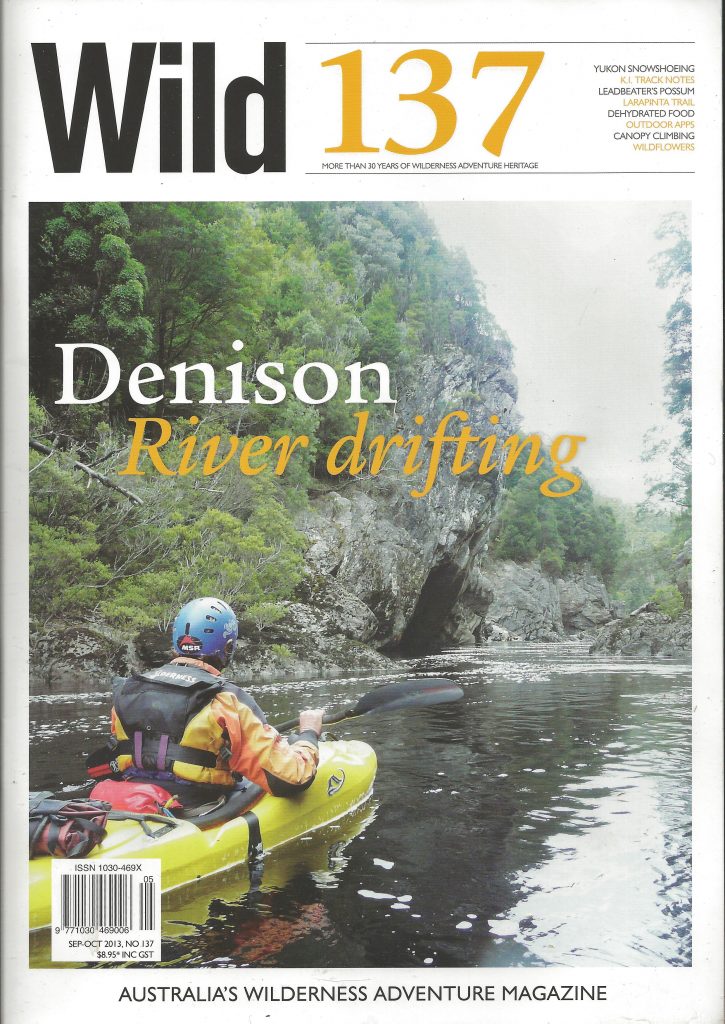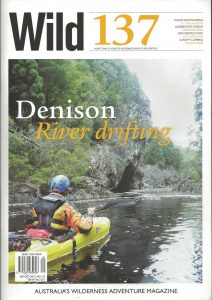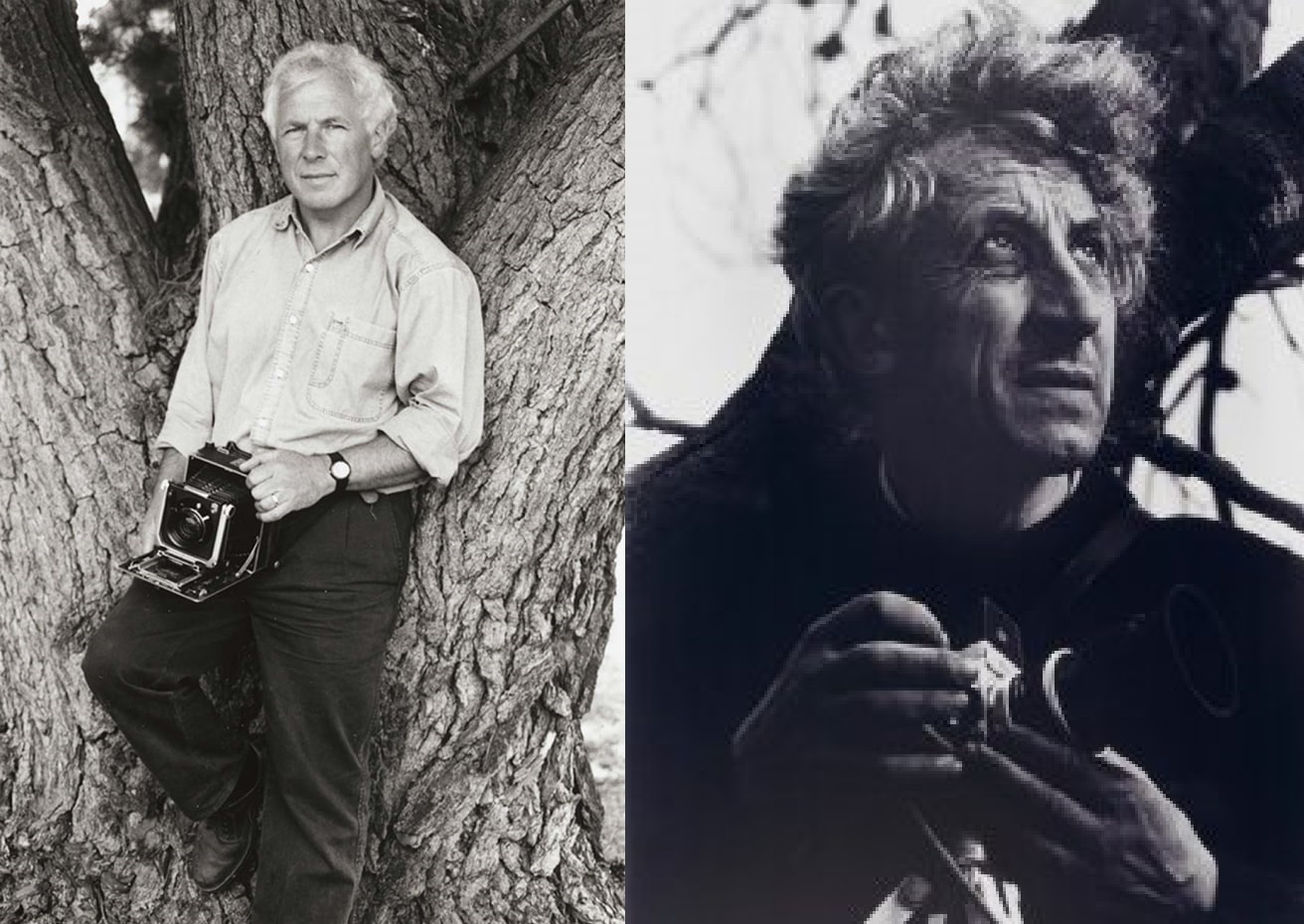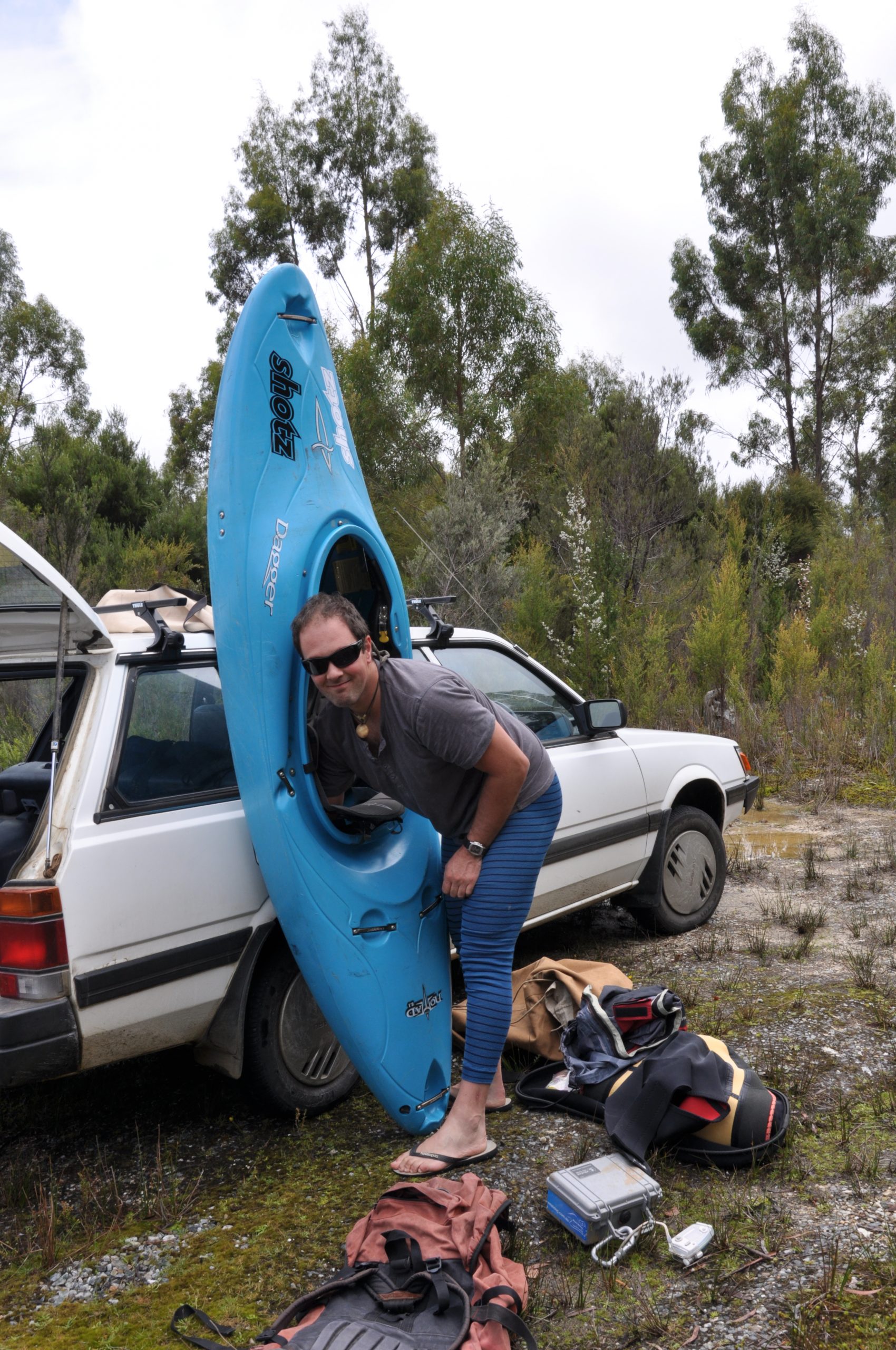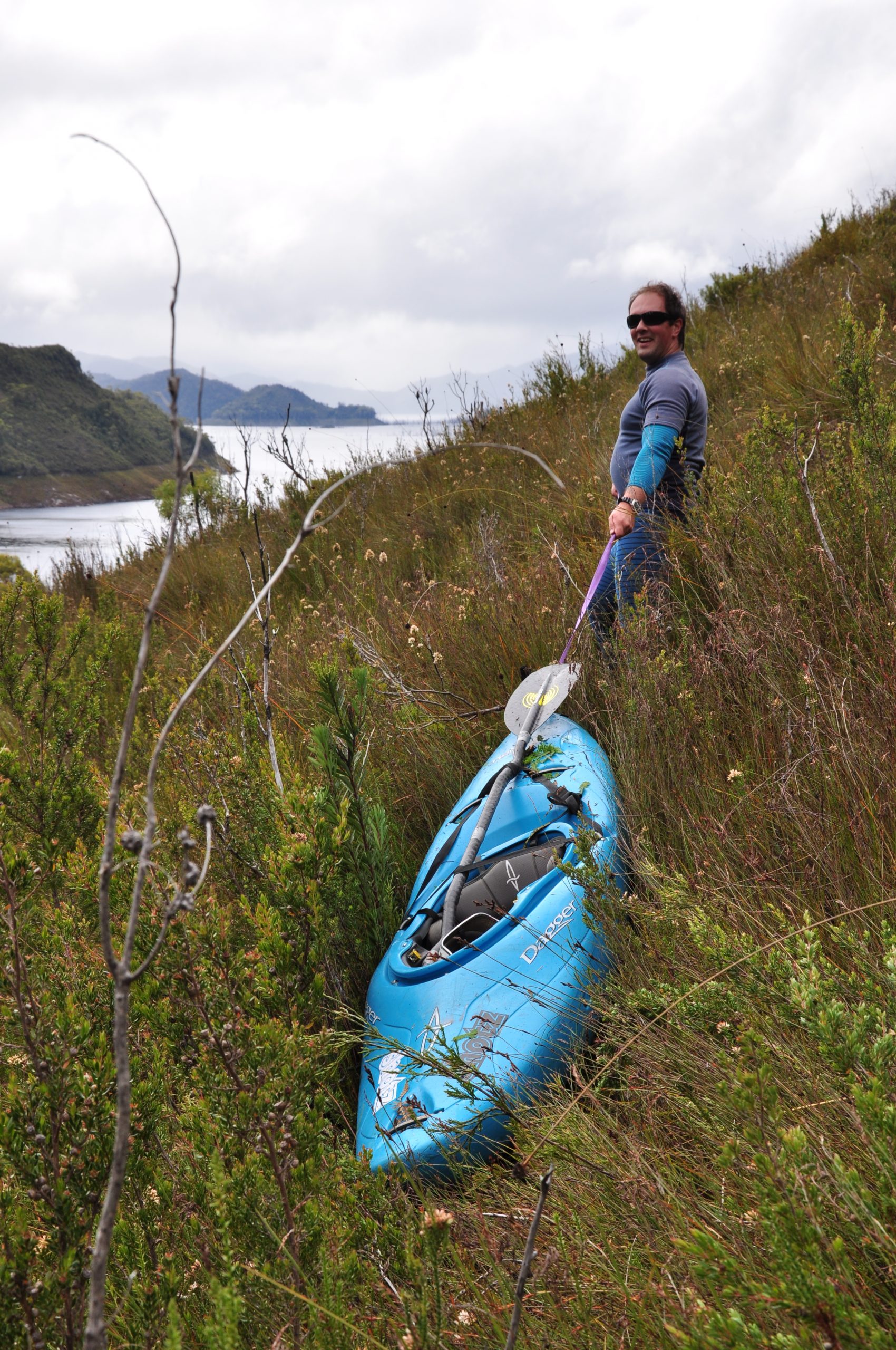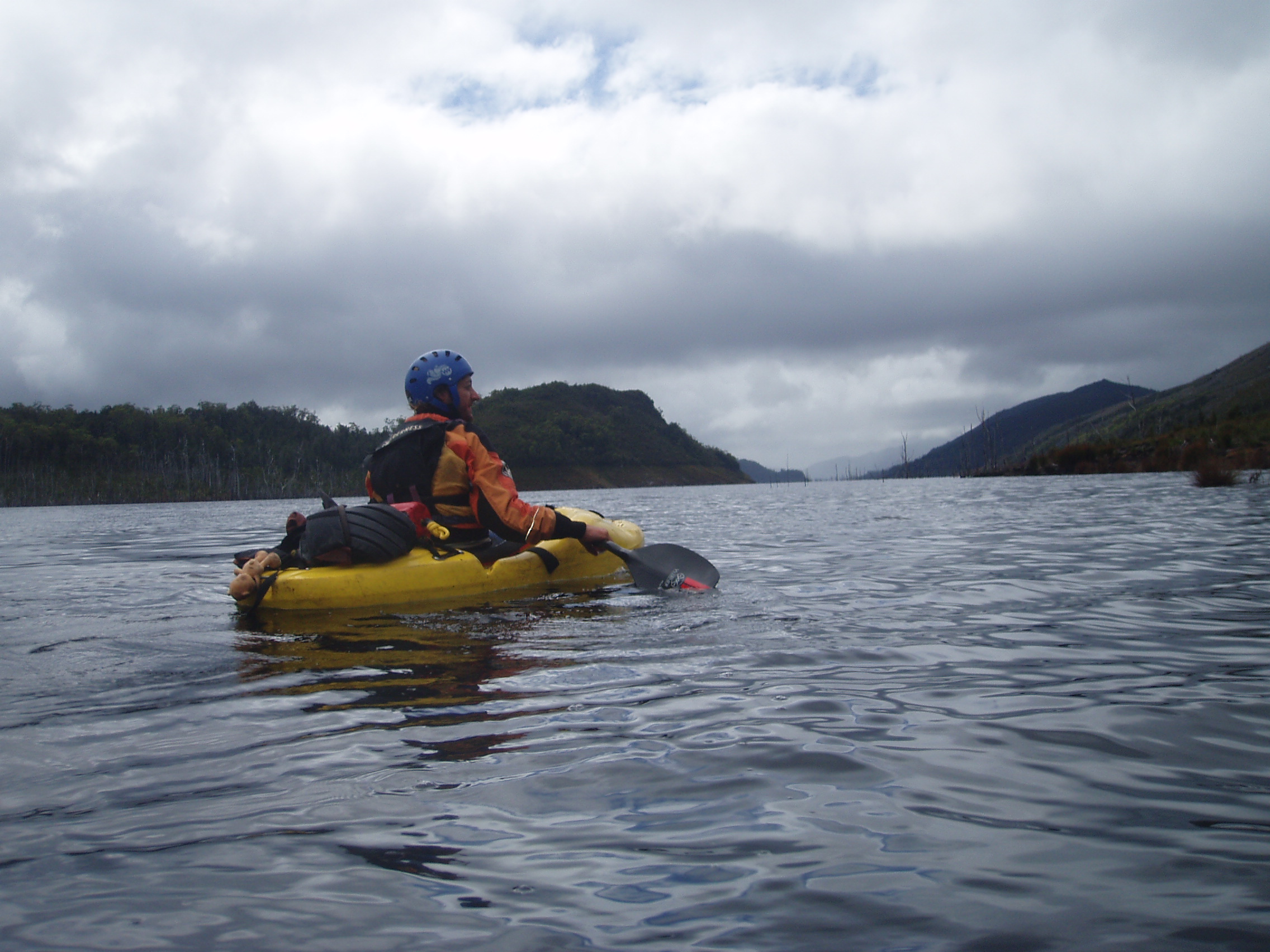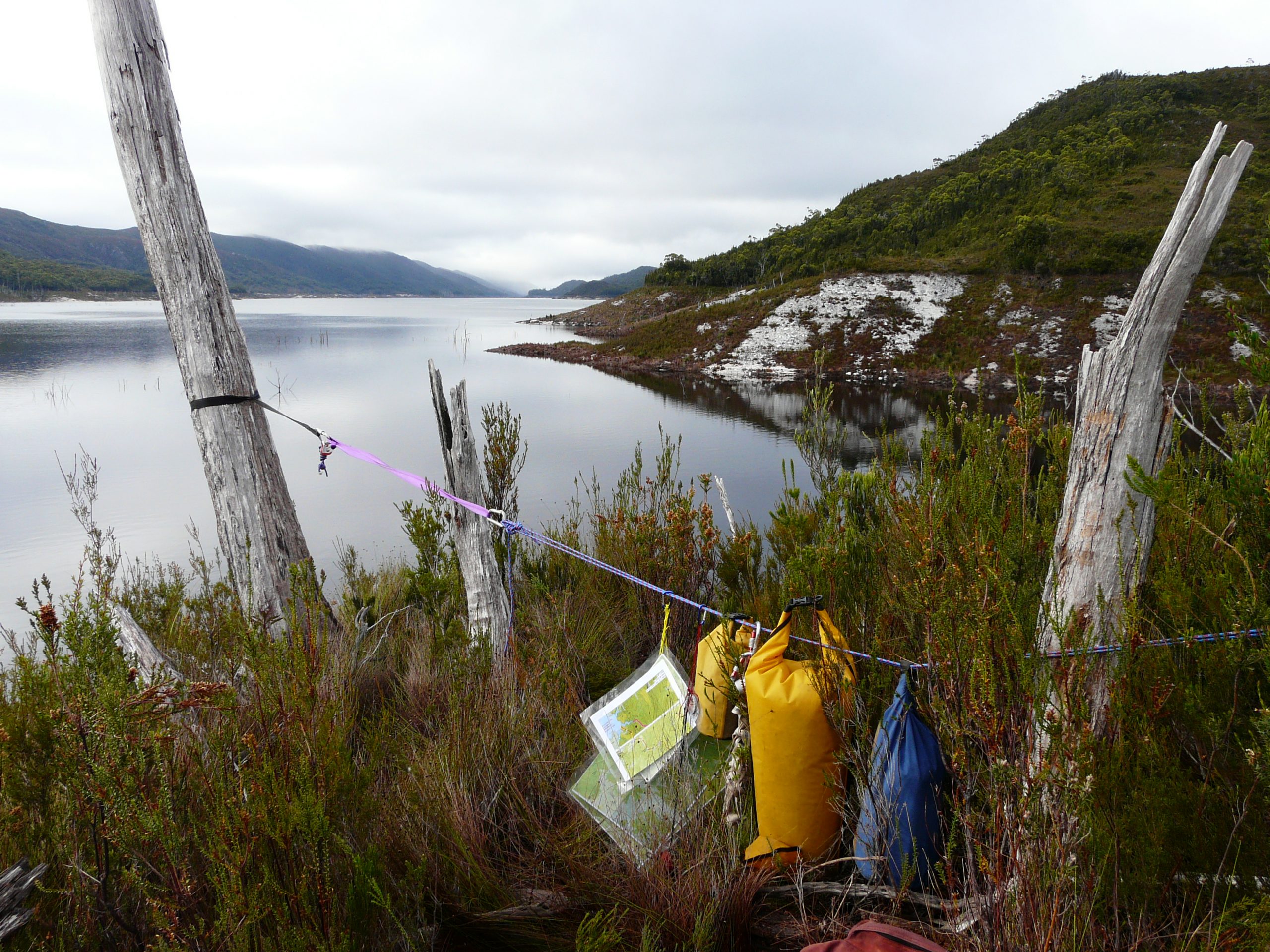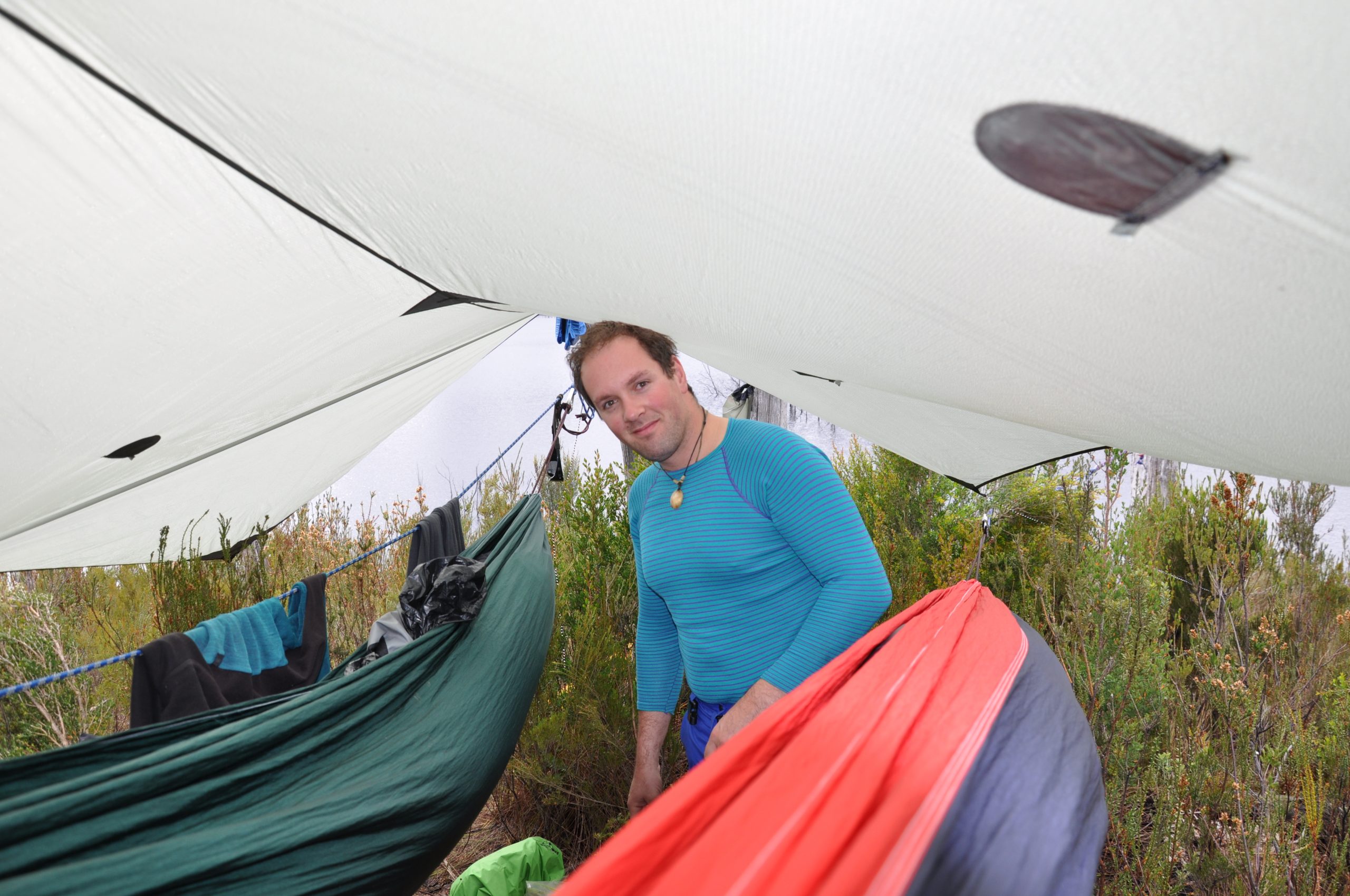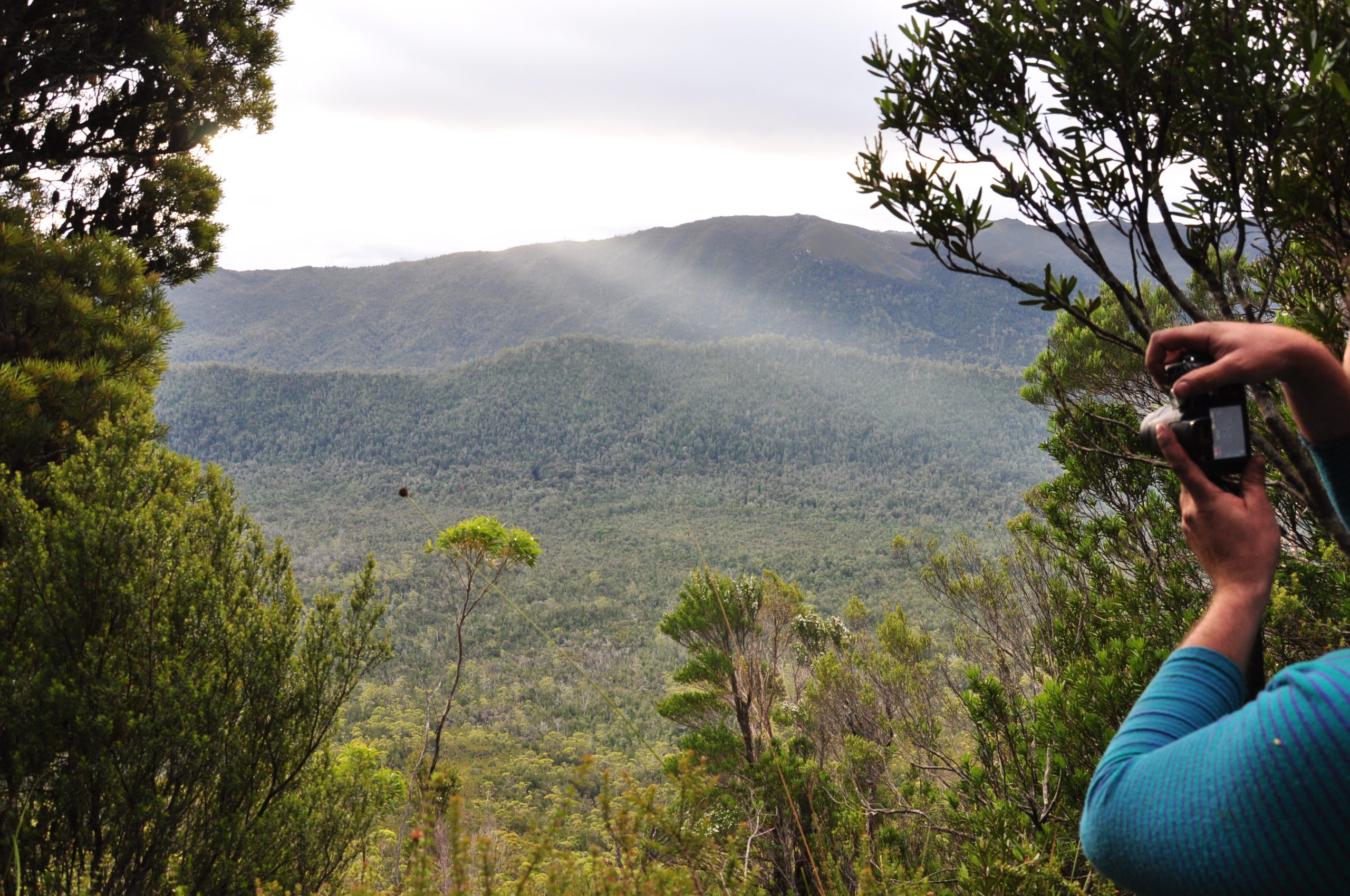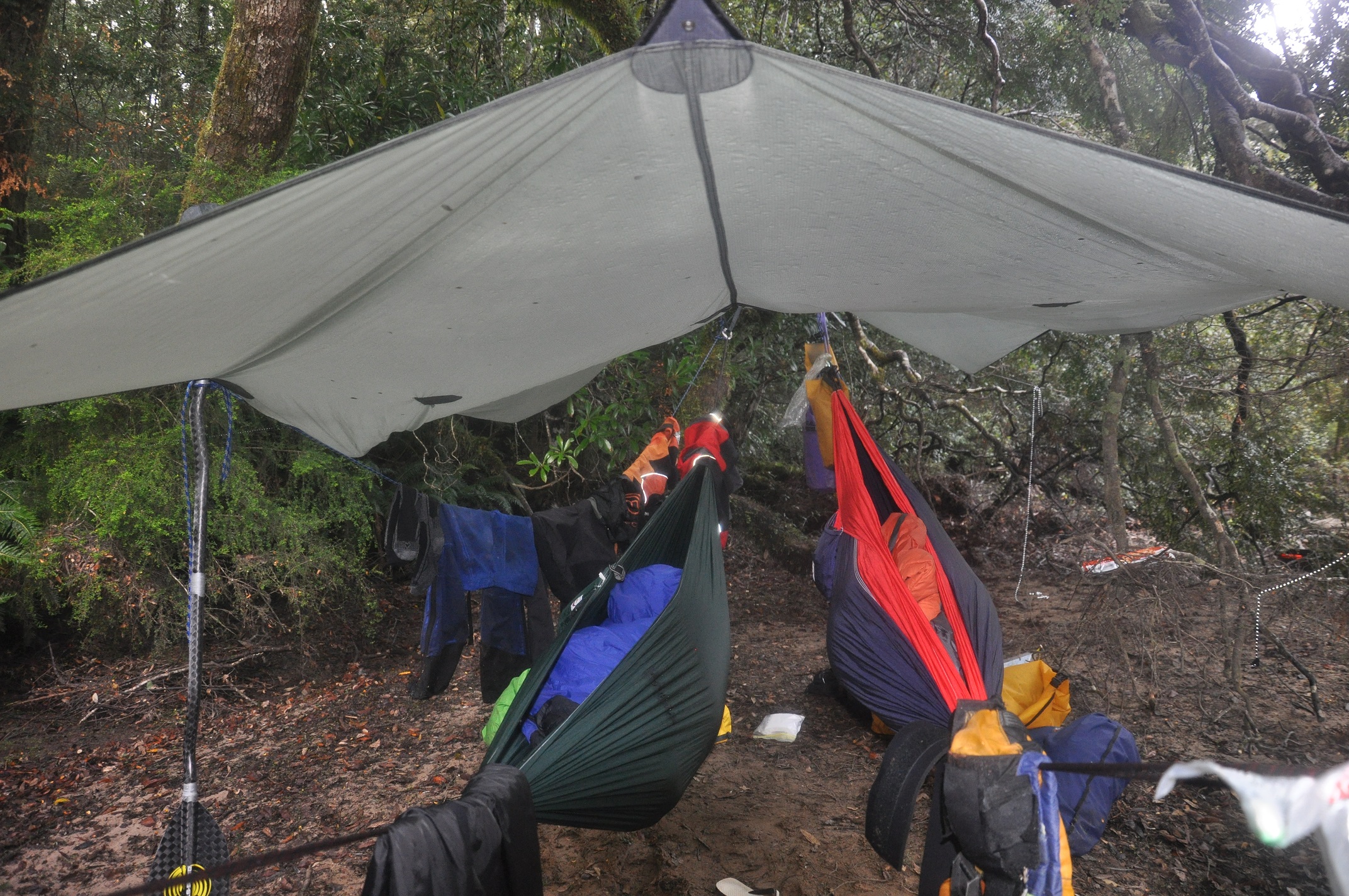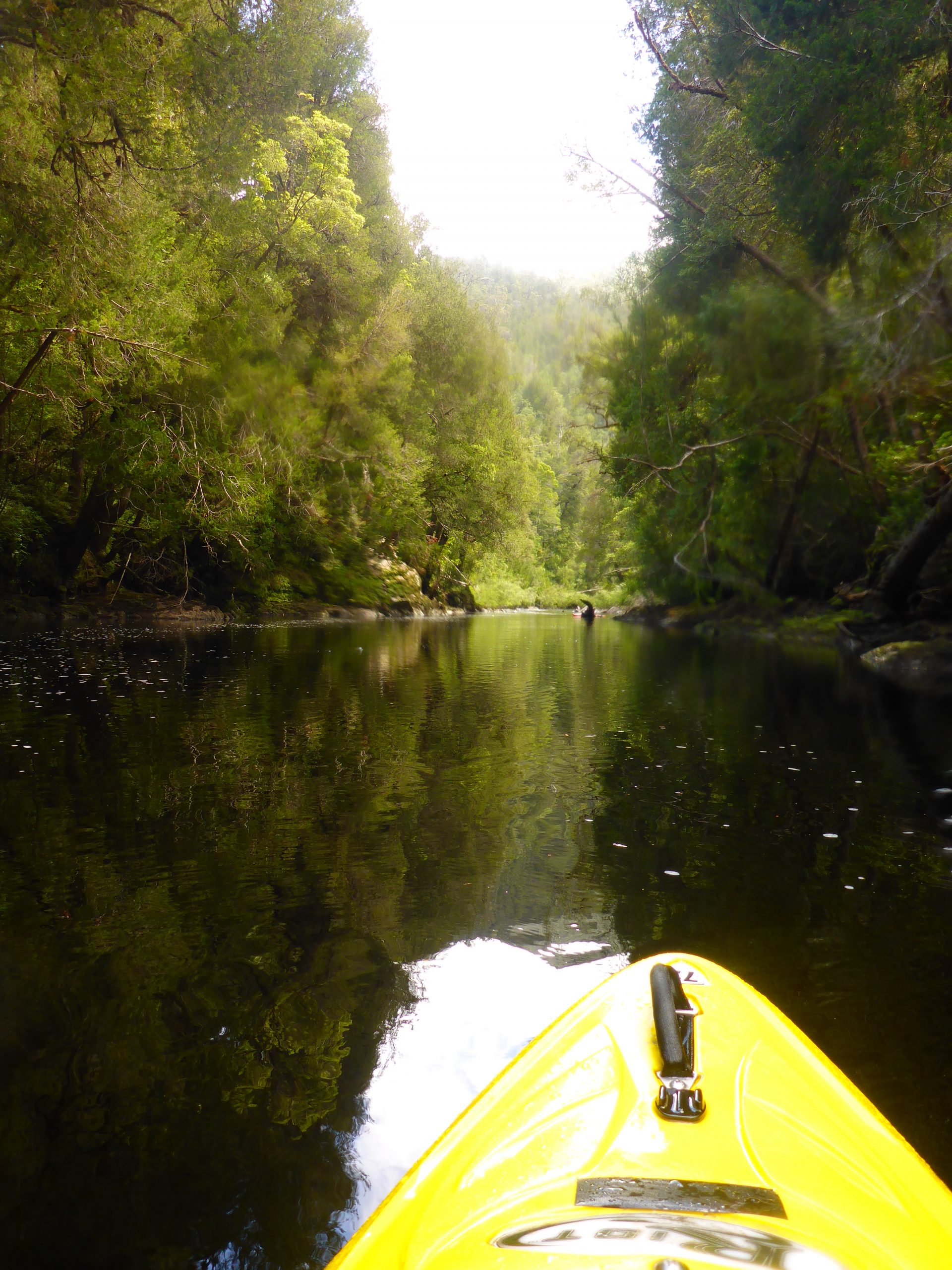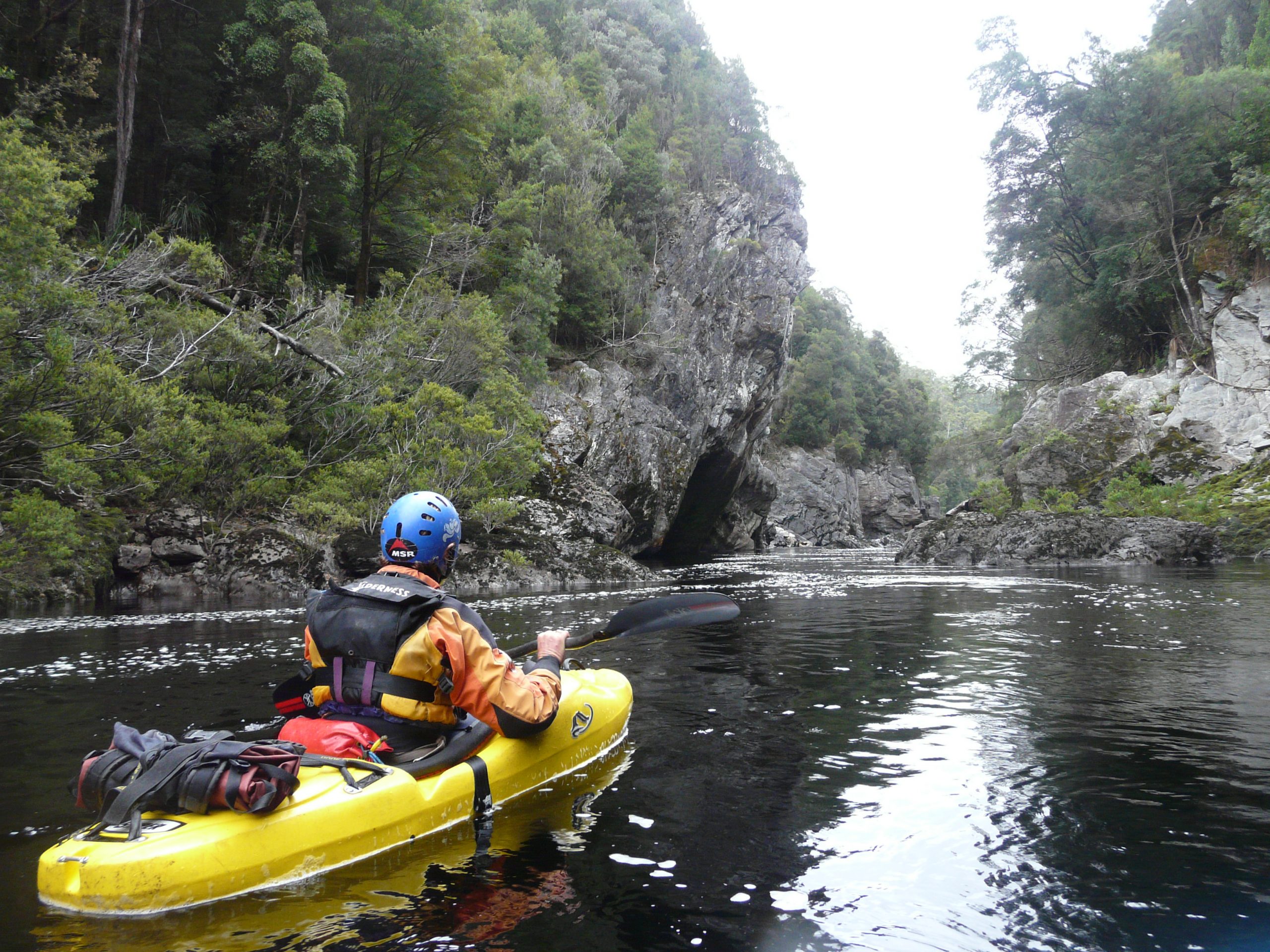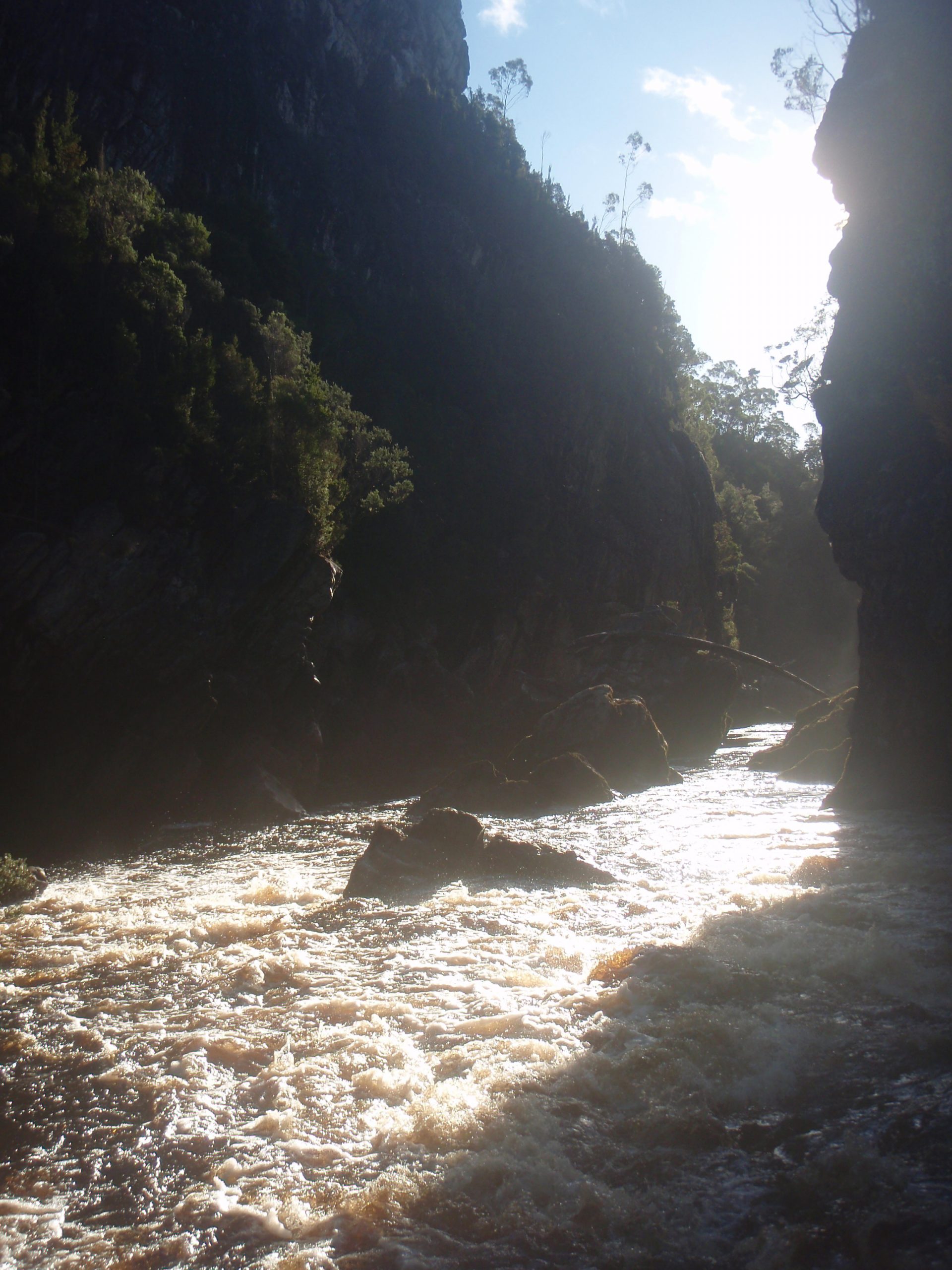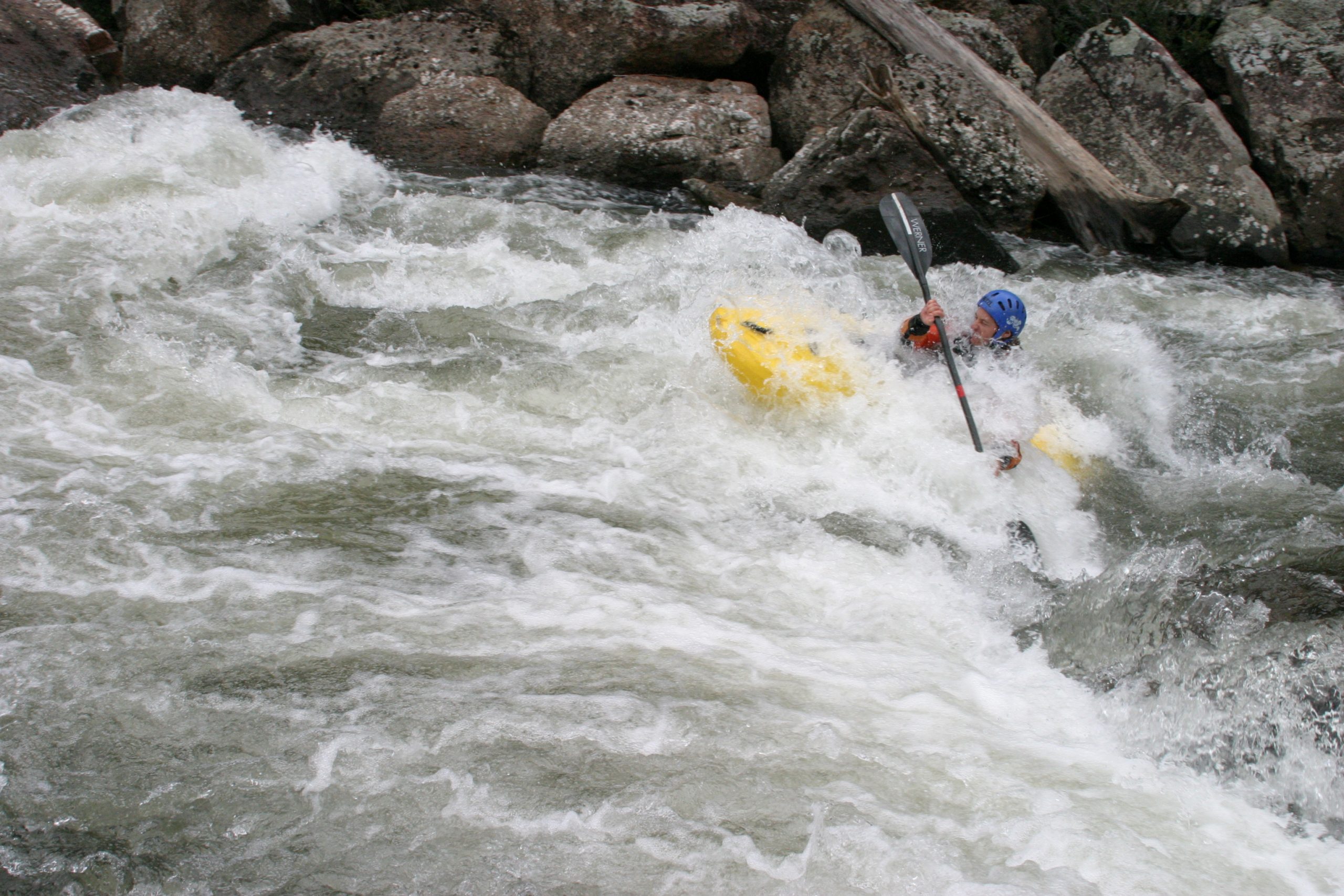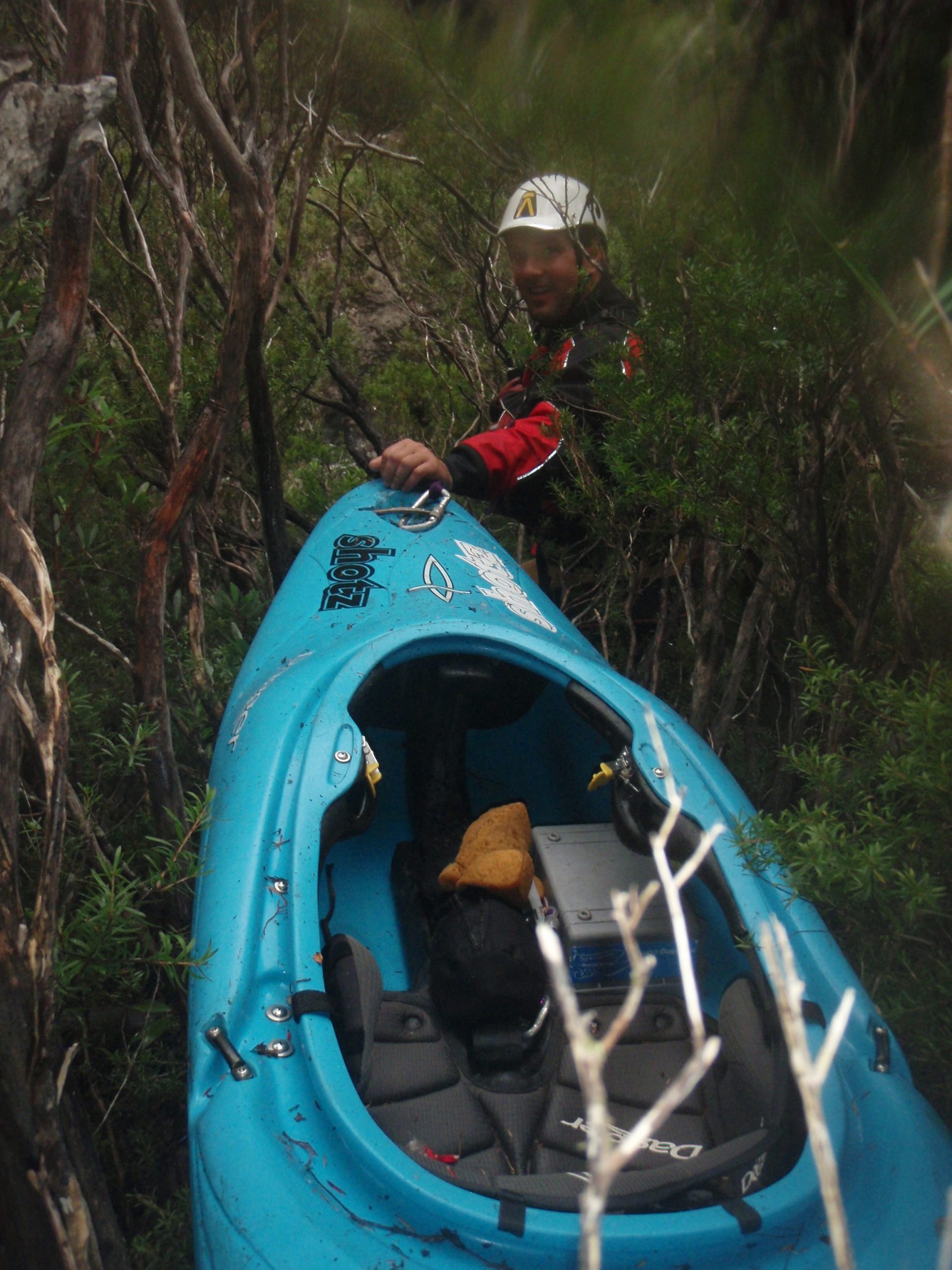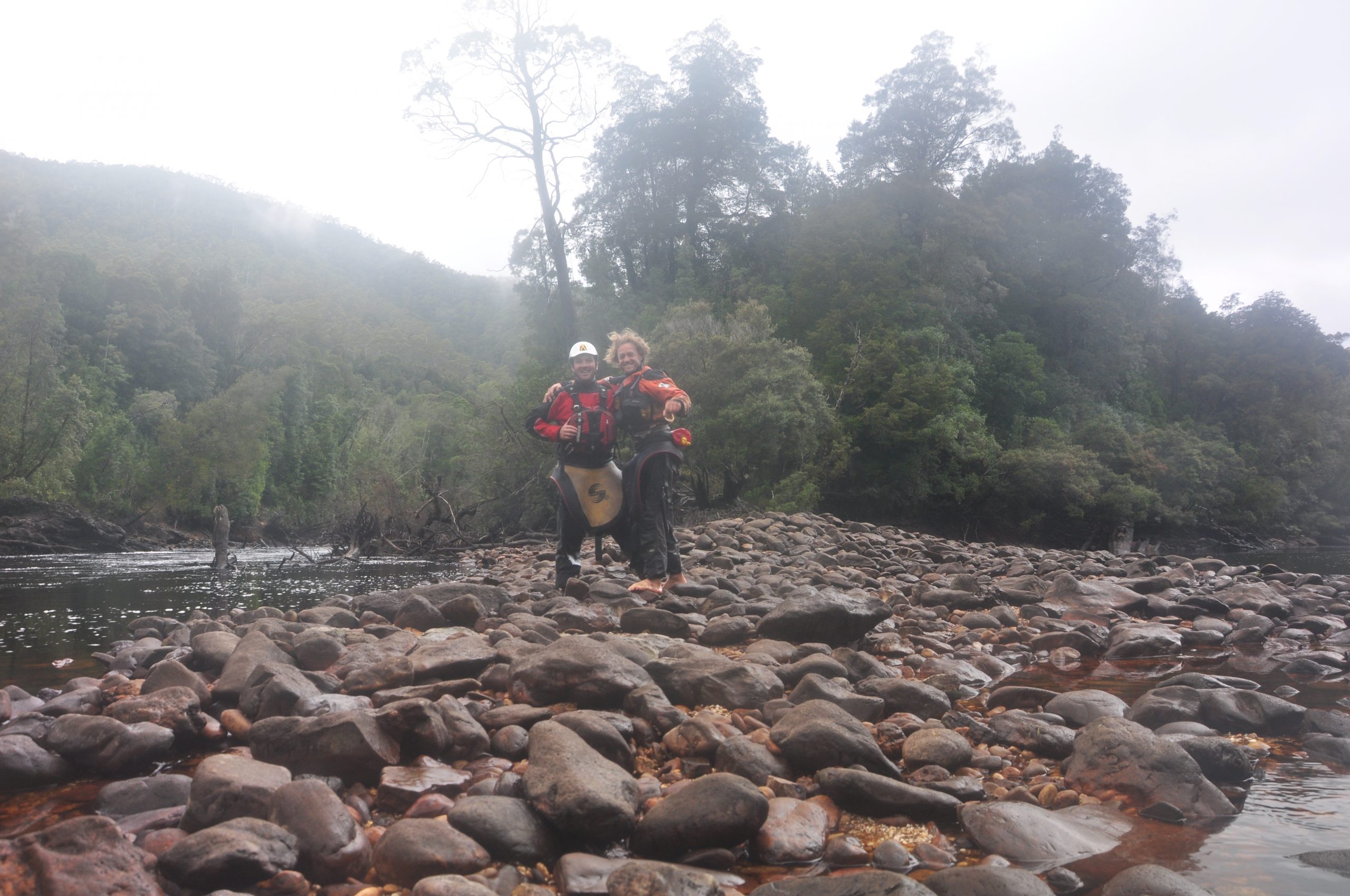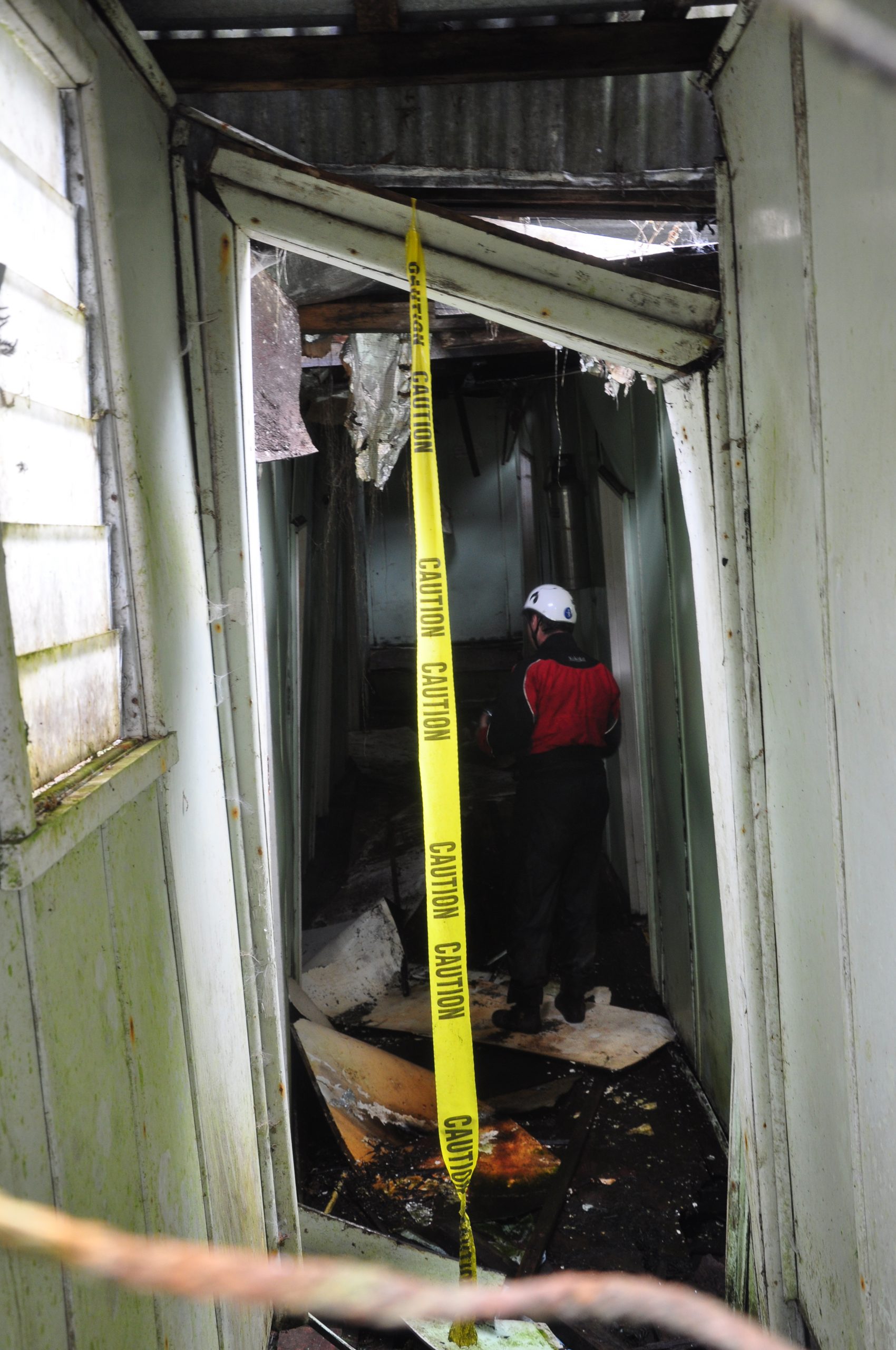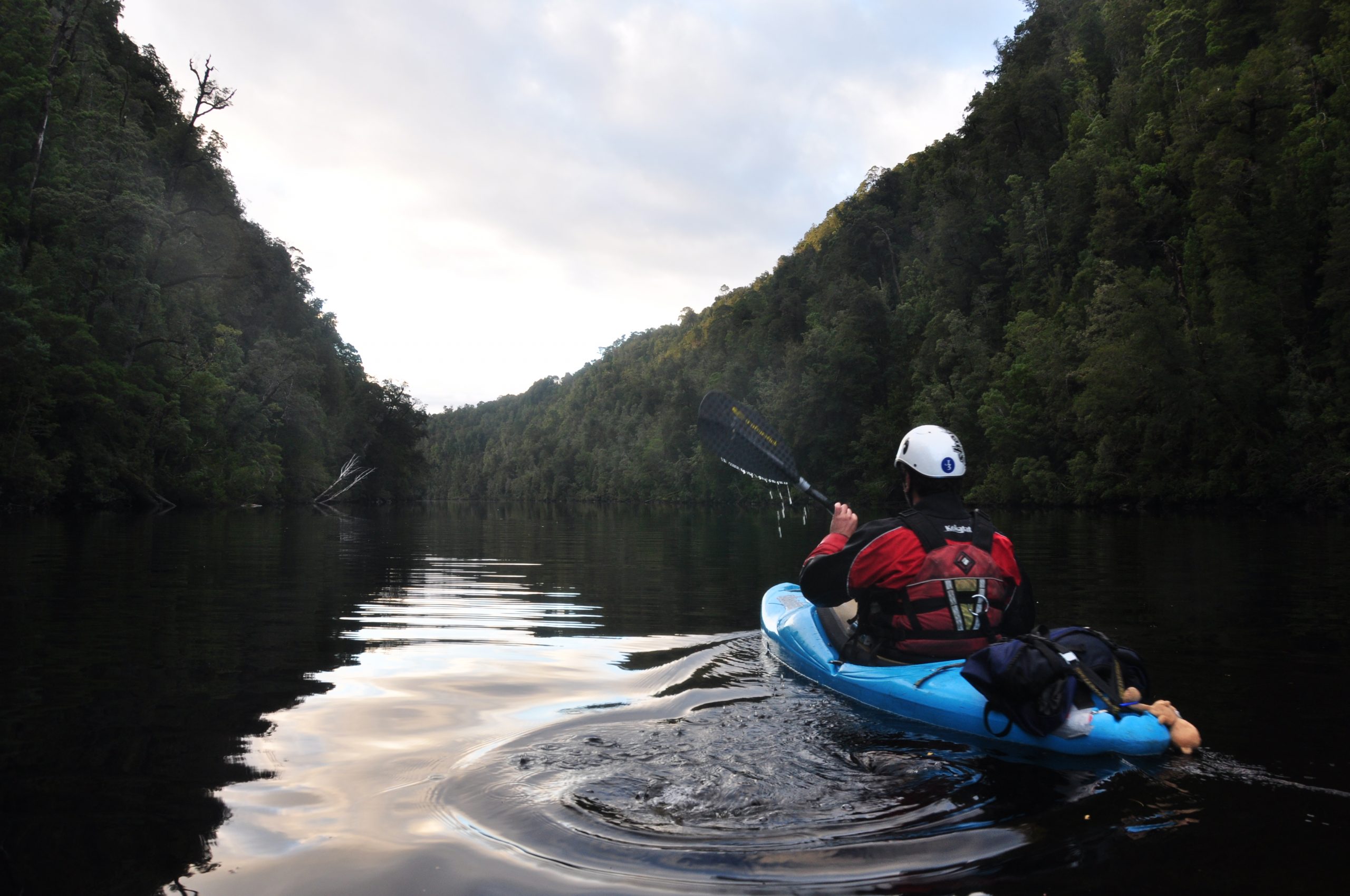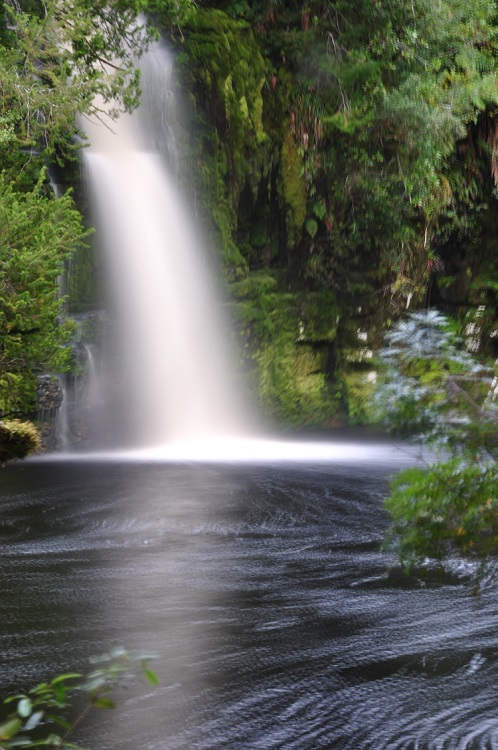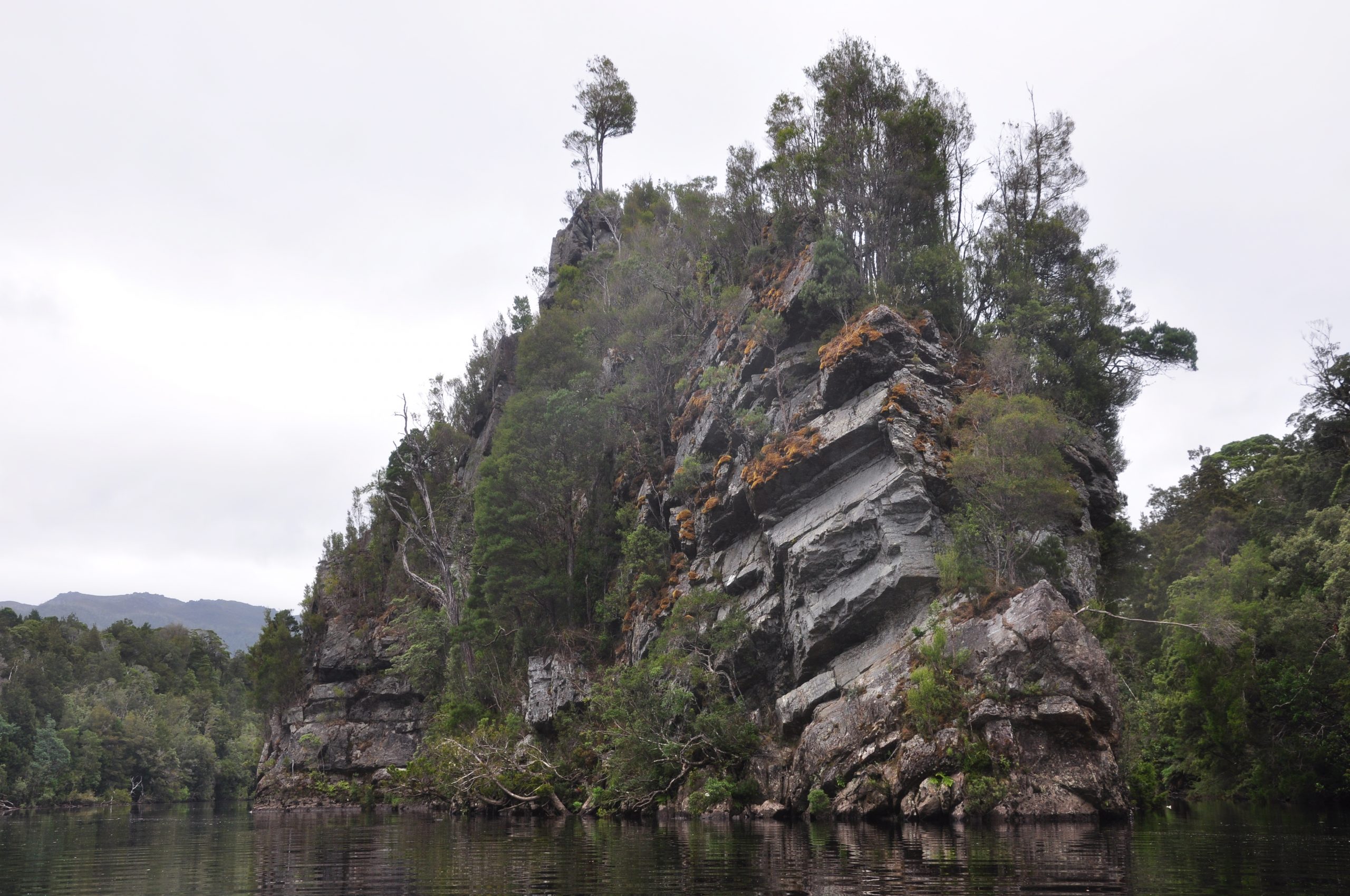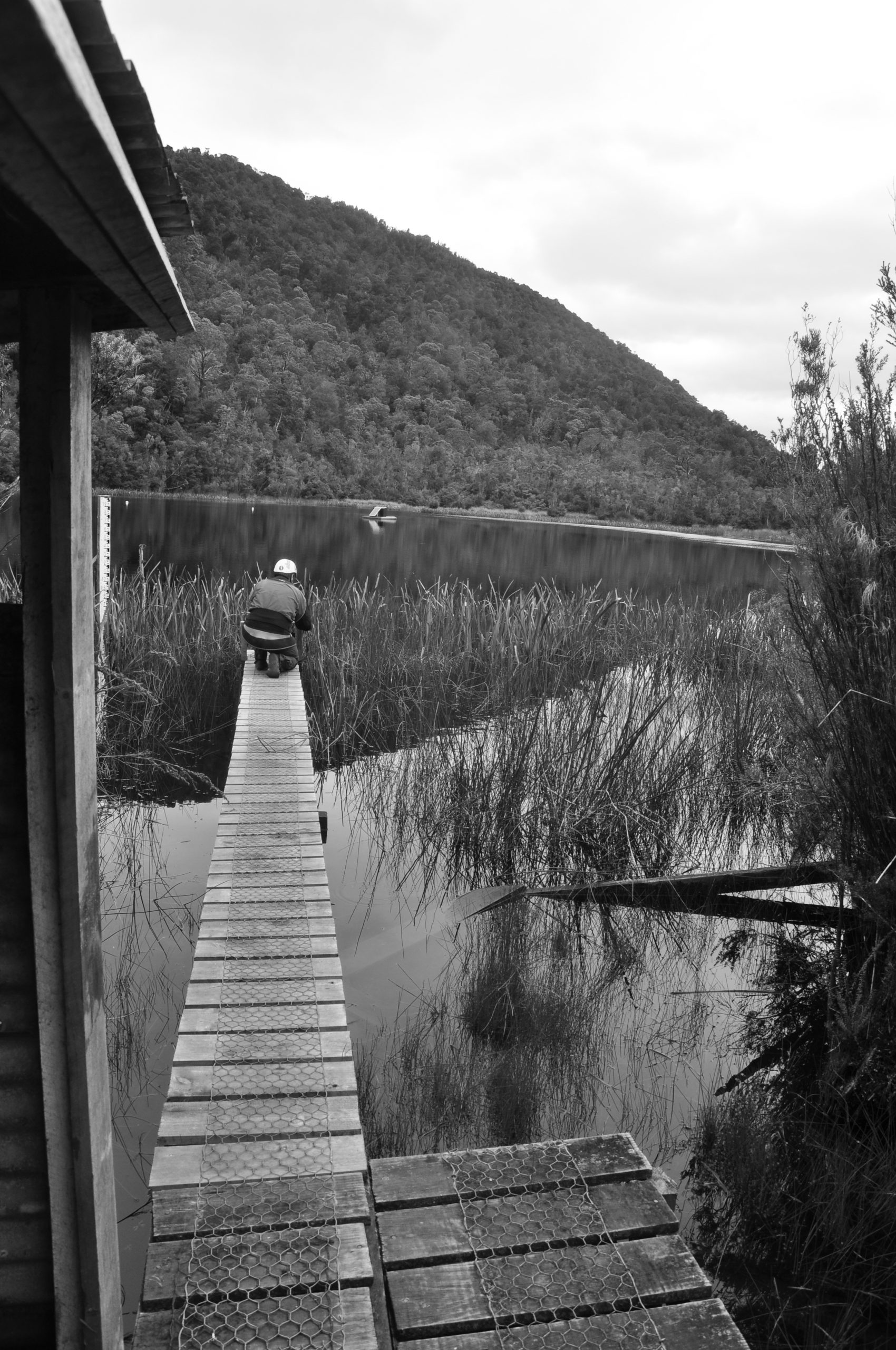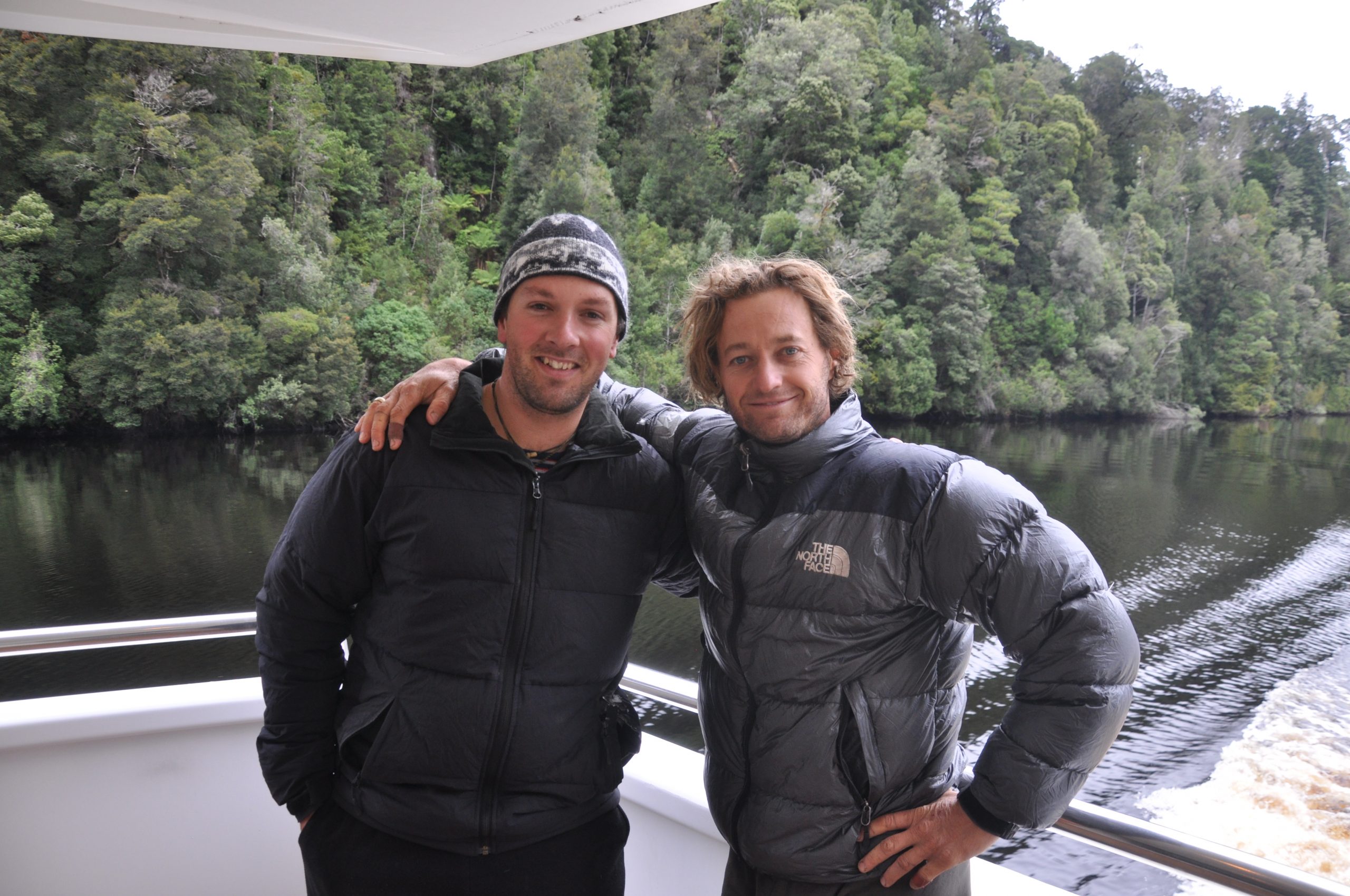
Featured in WILD magazine
FOR A SHORT FILM ABOUT THIS TRIP – PLEASE SCROLL TO THE BOTTOM OF THIS PAGE
‘What would the odds be of two men from Baltic States, each of them finishing up in Tasmania, being top wilderness photographers, each dying out there, each devoted one to the other’. These are the words of artist Max Angus used to reflect on the extraordinary lives of Olegas Truchanas and Peter Dombrovskis, two of Tasmania’s major conservation heroes. These men ‘til this day continue to inspire so many people and so many wilderness journeys into the wilds of South West Tasmania. We were eager to experience and share the same pure moments that Truchanas and Dombrovskis captured so explicitly in their images and in their legacy. They are more than just photographs but windows into what has been referred to as the ‘unknown quarter’ and ‘Transylvania’ of Tasmania.
Peter Dombrovskis & Olegas Truchanas
This uninhabited region is one of the last remaining temperate wildernesses on earth and includes some of the densest rainforest in the world in some of the world’s most inhospitable terrain. It was into this unknown quarter that Dan and I were about to venture to capture our own moments, explore the rich history of this region and to follow in the footsteps of many explorers before us, just like Truchanas and Dombrovskis.
A year in the planning led us to the start of our journey at the sleepy and nostalgic hollow of Strathgordon. We stood near the edge of Lake Gordon, quietly chuffed at the week-long adventure that lay before us. Our plan, cautious but adventurous, was to venture up Pearce’s basin on Lake Gordon, then drag our trusty kayaks over a range to access the Denison, a wild and remote river that Truchanas first explored in the late 1960’s. A couple of days floating down this watery postcard would lead us onto the iconic Gordon River and Sir John Falls, before arriving at Heritage Landing near the opening to Lake Macquarie. We had supplies for about 6 days, including a small bottle of Port for those special occasions.
My trusty partner in crime, Dan, was no stranger to white water & jaunts in the great outdoors. He was in Las Vegas on a work trip when I dangled this hook in front of him. While he was thousands of miles away playing roulette, I could already sense his comradeship. The adventure was on.
With our modestly sized creek boats crammed full with what always seems to be very improvised ‘bare essentials’, we started our kayak haul towards the lake. One and a half hours later, the squelch of mud at the lake’s edge was welcome relief. It provided a sobering glimpse of what good old fashioned hard yakka lay before us.
We both glanced at each other and enjoyed one of those silly chuckle moments you laugh when you both realise what potential ludicrous events you have willingly got yourselves into. Those moments, while tough, are priceless and memorable.
Like ducks to water, we set forth on our paddle north up Pearce’s Basin. We were both quite merry as it was a relief to have actually started our crusade after spending so much planning and shuttling vehicles and gear. Glancing to our east, the impressive stature of Twelvetrees Narrows Passage rose into the sky. It’s hard not to wonder about what hidden gorge lay dormant below these narrows in times gone past, before Hydro Tasmania engulfed this section of the pristine Gordon River.
As long ago as 1916, the potential use of these rivers for hydroelectric power generation had been noted. It was on October 24 in 1963 when The Mercury (Hobart) was headed with ‘Opening up the South-West’. It reported “…the Commonwealth Government will bear the cost of constructing an access road from Southern Tasmania towards the remote and hitherto almost inaccessible South-West. The primary purpose of the grant was to assist in the development of the vast hydro-electric resources known to exist in the Gordon River area”.
Many wilderness faithfuls could not believe that such a magnificent place might be destroyed at the hands of humans and despite fierce opposition, construction commenced in 1964.
In years to follow the rising waters of the Gordon Dam swallowed some of the South West’s hidden treasures including the heavenly sublime and picturesque Lake Pedder. This invasion into South West Tasmania stirred up much protest and laid the foundations for the creation of The Wilderness Society. Truchanas and Dombrovskis played a pivotal role in supporting this and the subsequent Franklin River campaign by supplying the visual ammunition required to capture the beauty of it for the rest of the nation. Truchanas was famous for hosting wilderness slide shows in Hobart that vividly awoke the public’s awareness and appreciation of the mountainous grandeur that they didn’t know existed. Dombrovskis, carrying on from Truchanas’s footsteps, further inspired public interest by capturing the essence of the South West in his majestic photos, in particular his iconic picture of Rock Island Bend on the Franklin.
It is with that very same sense of awe that Dan and I still get shivers down our spine every time we set foot in any remote quarter of Tasmania. We were also currently in awe of a ‘roaring 40’s’ wind that picked up from the west of us, tossing up some white water caps which delighted our white water crafts who were no doubt feeling out of place so far on a flat and long 12km paddle. Also coming into view from our west side was a very narrow unnamed inlet, a kilometre long, which opened up into a beautiful hidden amphitheatre. It struck both of us with a ‘lost world’ aura, reminding both these mouldy paddlers all too well of how this South West ‘Transylvania’ of Tasmania resonates with so much untouched wilderness and isolation.
After a lot of banter and lazy paddling technique, we reached the North West corner of Pearce’s basin not long before sunset. Our little wilderness jaunt for the next week or so has been done a handful of times by other adventurous souls and so a rough path over the range to the Denison River was supposedly marked. Glancing sight of the ‘out of place’ pink tape flapping in a tree above the water’s edge had us in the right neck of the woods. As we set up our hammocks and tarp on an island oasis, we cast our minds to the pioneering spirit of those who had forged before us. Tomorrow, when we scramble and orchestrate our way through the infamous thick scrub of South West Tassie, we should have some sort of trail to guide us….god bless ‘em.
To wake up rested and in total comfort and peer out from your cosy abode to glance the morning sunrise over Lake Gordon was priceless. As Dan’s nasal passage was grappling unsuccessfully with breathing difficulties, the lake lay majestically awaiting for a breath of fresh mountain air. Such a glorious view was possible under our tarp due to our elevated sleeping position in our lightweight hammocks. As well as necessitating our requirement of cutting down on equipment bulk, these hammocks serve us well by keeping us dry and snug above the saturated ground below.
Dragging ourselves out of the hammocks, however, was another matter all together. Once we did, we found ourselves packing up with a curious sense of wonder. Whatever lay beyond that pink tape was going to make us earn our keep, that’s for sure. We were here for an adventure and we had a distinct feeling that the true adventure was about to begin. Having said that we didn’t know that we’d be in strife within a few minutes! Well…almost. Our paddling wasn’t finished yet as we still had to ferry our way off our tranquil island and so as we foolishly paddled with our bags sitting top heavy on our lap, we came very close to claiming our first eskimo roll…. at least the first half of the roll anyway.
A river of sweat was pouring down our faces and we periodically abused the English language as we laboured our way up to the first knoll. This was just after 50 meters. Cripes. It wasn’t long before we had another one of those silly childish chuckle moments again. There was no hiding from the fact that this was going to be hard yards. We chose to carry our gear on our backs while dragging an empty kayak. Empty still doesn’t mean light though.
Our dragging quest started from an elevation of 220m and undulates its way to 541m before dropping back down to river level.
Normally a 320m climb is quite a manageable feat but it soon became obvious that scrambling up (often on all fours) the side of this steep range through thick near horizontal scrub, wearing a large backpack while dragging a plastic anchor, is no mean feat. It seemed a little absurd but that’s just the way we liked it.
Our trusty kayaks were routinely marking this clambering route as they left colourful plastic souvenirs on the sharp rocks that gouged into their rigid plastic skin. Dan was a clever enough lad to borrow one of our mate’s kayak for this trip and save his boat from the dragging torture. I was there when Dave (the boat’s owner) flippantly made such a generous offer, witnessing his demeanour shift from being his trademark relaxed and carefree to a bloke who was racking his brain for a ‘get out of jail’ card once he realised how scarred his boat would become. He took heart knowing that at least if he can’t make this one off journey, well at least his better half (kayak) may stake that claim.
Thankfully the track was obvious in most places as we wove our way through the thick maze of melaleuca scrub. Swapping leads, we grunted our way up the steep range to a knoll at 485 metres. We were ever careful not to lose hold of our plastic bath tubs as a runaway boat would potentially be a sacrifice to the Tasmanian wilderness, eager to hold anything in its grasp. As the views towards Lake Gordon graciously opened up behind us, we finally found ourselves at the highpoint of 541 metres after many hours of toiling.
The last couple of hundred metres involved us virtually rock-climbing up over logs and branches through rainforest before we unceremoniously yanked up our kayaks on a leash.
Our jubilation was celebrated by a quick swig of some Stones Mac Port, our one elixir of choice for this voyage. Still, we both had a knowing realisation that going downhill was not going to be an effortless slide, more like a slippery game of snakes and ladders.
Our kayak hulls were fast turning a shade of brown from being souvenired from the ground, as we edged our way to a high view point overlooking the next valley. At the very heart of this landscape was a faint line, a squiggle of a river – the elusive Denison. Casting our awe struck eyes onto the Denison River for the first time not only provided us with a moment of realisation but stirred up reflections of those who have journeyed here before us.
The Kuti Kina Cave (Spirit Cave) on the nearby mighty Franklin River provided evidence of such. It was a stunning discovery, providing a snapshot of time between 15,000 and 20,000 years ago when Aboriginal tribes were the most southerly dwelling people in the world during the last ice age. In much more recent times, convicts fleeing from the squalid Sarah Island prison in Macquarie Harbour bravely entered into this South West wilderness in attempts to flee. In particular, the two convicts James Goodwin and Thomas Connolly crossed the Denison River after fleeing from a logging party on the Gordon in 1828. Goodwin later put his hard won experience to good use working as a guide in this region before he was back in prison after stealing a cow.
For the remainder of this century, explorers and prospectors defiantly cut tracks or searched for gold throughout these deep river valleys. By the 1920s and 1930s, piners were getting in on the act as they dragged their wooden punts up many rivers searching for and cutting the highly prized Huon Pine trees. The elusive remnants of these piners camps are still evident on the Denison and Gordon rivers ‘til this day. Then came modern day explorers like Olegas and Peter, skilfully using their cameras to capture the enchanting beauty of Tasmania. Their many lone, epic journeys saw them venture to remote valleys and mountain ranges, to discover hidden lakes, tarns and forests where, in many cases, no man had ever been.
It was now late afternoon for these two weary fellows and so when we stumbled our way upon a nice campsite overlooking our chosen valley, we humbly chose to bunker down for the night. As parched as we were, we unfortunately couldn’t satisfy our body’s eager thirst as we were down to our last few pints of water. It’s quite ironic that in a land famous for raining for more than two thirds of the year, we were bone dry. Port wasn’t a bad substitute mind you. On many a previous trips to this South West, we frequently desire less water due to the dangerous and swollen rivers or the bushwalking tracks that closely resemble quicksand. Tonight it was a room with a view as Tom Yum Goong soup revitalised our ailing bodies before the wind gracefully rocked our hammocks and us to a snoring slumber. It took us one heck of a long afternoon to get about two and a half kilometres. Like the wise old tortoise, we were making slow and steady progress through this Tasmanian labyrinth.
It certainly put truth to the old saying, ‘It’s not where you go but how you get there’.
A few small aches from yesterday reminded us of the journey thus far and what’s to come. They were good aches, like a tattoo of unforgettable memories. It wasn’t long before we found ourselves back on the hard march. Our trail was rapidly losing height as we cautiously negotiated what was soon becoming a razor like ridge. The steep drops either side of our route once again had us sternly gripping our kayaks for fear of them ‘ghost boating’ their way to a lonely freedom. The rocky outcrops that were now our path, kept the thick Melaleuca vegetation at bay and provided us with more tantalising views to the west. This soon gave way to small eucalypts amongst the tall cutting grass. We reached one rocky knoll where I’m sure most previous travellers would have stopped for a picture moment. As our minds wandered towards the river below, now so evident, we joked how our kayaks would be going through an identity crisis. Still, they had grown accustomed to this ‘overland’ dragging caper (somewhat reluctantly) for many years now. Like us, their moment will come in spades.
We could now see the river no more than what seemed to be a stone’s throw away. Tantalisingly close. We had come roughly three klicks so far with about half a kilometre still teasing us. Between our cutting grass and the river looked to be a Sherwood Forest besieged by Melaleuca and indeed it was. It took us over an hour to dodge and weave our way through. It was tricky enough getting our own ragged bodies past the fallen logs and branches with a backpack on let alone dragging a kayak through this maze as well. It was very akin to the Tasmanian horizontal scrub. Such scrub derives its name from its habit of first growing upright on long thin stems to approximately forty feet, and then, unable to support itself, it falls down horizontally. These stems then send out new shoots which grow upwards and the process repeats itself forming a near impenetrable forest. Thankfully, the Melaleuca was more forgiving.
By this stage at mid afternoon, our water supplies had well and truly run out (even our Port was on its last legs) so when we stumbled upon a tiny creek with a very modest flow of tannin water, we found ourselves digging little wells to pool God’s juice as best we could before recklessly slurping it down with all its tasty impurities. Such a moment had us casting back to a mate’s near fateful experience near the Macalister River in Victoria when he almost perished of thirst, forced to sample his own urine to keep the death adder at bay.
With our thirst partially quenched, we started out on what surely must be the final gasp to the Denison, named by the pioneering surveyor James Sprent in honour of Lieutenant Governor Sir W T Denison. So close to the river and yet we could make no visual and our ears still couldn’t detect any sound of the distinguishable rushing water. With a few pink bits of tape to reinforce our route choice, we stumbled on. Low and behold as we made our way past a few ferns, the inevitable happened.
The Denison in all its glory was nonchalantly flowing in front of us, hiding away from the world’s possessive clutches.
It was a moment that these two fellows would never forget.
After so much planning, so much of playing out the Denison in our minds – here it stood, as bold and articulate as we dared imagine. We both had a sense of such awe for a river so pristine and beholding in its plight. Akin to many rivers in South West Tasmania, this river spent millennia forcing its way through the Precambrian quartzite which covers about half of this region. This very old rock has been extensively deformed by massive pressures into great waves and folds that formed these mountain ranges, albeit with millions of years of erosion. This erosion and the glaciations enhanced the contrast between the craggy ranges and the river valleys that we see here today.
We now had to re-organise so that our gear was out of the backpacks and tightly waterproofed into our trusty kayaks. Just like us, I’m sure our boats were keen to wet their appetite. After negotiating some logs at the river bank, we gratefully commenced our paddle downstream. It was quite late in the afternoon, so while we were lapping up the grandeur of our predicament, we were on the lookout for a cosy abode for our hammocks. We soon floated around a left hand bend where a stony beach lured us to its comforts.
With a hot and nourishing dinner of Massaman curry under our belts, we were full of banter as we rested in our elevated sleeping quarters. While many topics graced our conversation (mostly repeatable), much reflection and chatter was indeed about the last couple days of hauling and the exhilaration of just where we found ourselves right now. Not only is the sheer beauty of Tasmania intoxicating but another beauty is the sheer escapism that it always tends to provide. Here we were, neatly tucked away in a remote wilderness valley without a care to the outside world, getting back to the simple things in life and sipping on some Port to boot.
A famous quote from Peter Dombrovskis comes to mind;
‘It is a wild land (Tasmania) and I think that there is a certain wildness, a certain wild element in man’s nature that is essential to the humanness of man. If man becomes contained, too docile, programmed, then he becomes less human. And this wildness in the wilderness allows the wildness in man an expression’.
This experience was certainly making an impression on us, providing a medium that stripped our personal nature back to the rugged and honest truth. The sheer effort required exhausted us at the same time it rejuvenated the soul. Lastly before dozing off, we both paid homage to the experience of the last couple days. Quietly chuffed with our efforts, we both agreed that, without doubt, they were some of the toughest hard yards that we both could remember. The things you do.
It was fair to say that we didn’t get on the H2O very early. Between the majestic location and warm confines of our floating bed, we indulged ourselves in the moment. Mark Errey, a member of a canoeing party down the Denison in 1975 (believed to be only second to Truchanas) commented ‘so deep and narrow are the Denison gorge’s that even up to the late 1960’s maps did not reveal their existence. Early piners could not penetrate these gorges because of their precipitous walls – more than 250 metres in places – and a series of steep cascades’. Dan and I were enchanted from such references but naturally weary of what lay ahead. Now, as we sat at the rivers edge watching the graceful flow, we half suspected to see Olegas Truchanas floating along in his self designed kayak. This aluminium frame kayak was a clever design which enabled Olegas to dismantle it at will for transportation or portaging. A far cry from our ‘plastic fantastic’ kayaks.
After paddling south west for a few kilometres, we reached the northern boundary of the Truchanas Huon Pine (Dacrydium franklinii) forest, formerly a reserve. This was very much a highlight of our venture. These Huon Pines were described in glowing terms by the Sticht party in 1928 and have since laid claim to being the oldest living trees in Australia and one of the oldest living organisms on earth. Fossil records from a tree found in South West Tasmania were dated at 3,462 years. Huon Pine is the pride of Tasmania and is well known for being the best boat building timber in the world as it doesn’t seem to rot. It contains oil which makes it virtually indestructible.
On the back of this discovery by the Sticht party, Olegas set out in early 1970 to validate the existence of this Huon Pine stand before the Hydro-Electric Commission and piners felled these highly regarded specimens. He confirmed that this is the only known remaining stand of large mature Huon pines in the world and in July 1970 the reserve was proclaimed. Akin to the entire rivers be-stilling beauty was this stunning Huon Pine wilderness. Large stands were encroaching on the rivers banks. It was timeless and primeval. One can appreciate Truchanas’ enchantment with this area, and his enthusiasm for its preservation.
We had high hopes of climbing to Olegas Bluff up on our west flank but the impenetrable appearance of the scrub in this Franklin Gordon Wild Rivers National Park made us consider otherwise. Floating on through this wonderland, we could not help but notice the formidable and impressive profile of Marriott’s Gorge fast approaching where the river pierces it way through the Hamilton Range. It would be the first of many gorges for this trip. Time to once again earn our keep. Typical of all gorges, our heart rates were starting to rise, especially knowing how the gorges on the nearby Franklin River certainly commanded much respect amidst all their excitement. While the rapids shouldn’t rise to lofty heights, we’d been having lingering thoughts of what rapids lay here since we spotted this gorge from our vantage point two days beforehand on our cross country haul.
Armed with defensive and cautious paddling, our kayaks had us bouncing through many boulder rapids, occasionally scouting and portaging around some chutes that were choked with ugly logs or a boulder sieve. Rocks were popping up everywhere, like meerkats on the savannah. Always mindful of our remoteness and heavy laden boats, we bumbled our way through the grade two and three rapids unscathed, relieved that the water wasn’t too high or pushy for our liking.
Rivers here in the South West can rise several metres in a matter of hours and can reach flood levels of near biblical proportions.
When we did have to portage unrunnable rapids, dragging the sheer weight of our boats over slippery rocks had these two fella’s earning an honest wage. Quite often the most dangerous part of such a trip can be the portaging, not the river itself. We both remarked how, compared to our clear and see through rivers in home state Victoria, the rich tannin stain of the water here whilst beautiful, disguises and hides what lies underneath the surface requiring us to be more weary of what lurks underneath. That’s often why these rivers are called ‘Rivers of Tea’….or as Dan likes to call them a ‘River of Bourbon’.
The river now gave us some respite but it would only be for a few kilometres as the Freedoms Gate mini gorge was patiently awaiting, knowing that our time would come. The day, intermingled with the first light rain showers for the trip, was getting long in the tooth, so we pushed strongly through the low grade rapids of small boulders and shingle rock. There was rumoured to be a small campsite just on the other side of Freedoms Gate at Rosslyns Pool and considering that scope for any cosy campsite’s in this overgrown landscape is few & far between, it was on our radar. Our timing for Freedoms Gate was impeccable as the westerly sun was piercing through the rock cliffs like the imaginable pearly gates of heaven. Quite surreal! By the sheer brilliance of the geology and the noisy white caps of the cold water racing through the small gorge, all our senses were expecting rapids of big nature, especially in our heightened state of awareness.
As it turned out, our senses and vision were literally blinded and fooled by the radiant light as the gorge took a most unlikely placid approach with a most enjoyable and negotiable rapid. Rippa. It’s part of the beauty of white water kayaking, the river always keeps you honest and to a certain degree keeps you guessing. Each rapid is different and has its own particular character that you need to read and get in sync with. Day by day rapids change, just like we do.
Like battle weary soldiers, we casually drifted into the comforting clutches of Rosslyns Pool. I could clearly visualise a picture that Dombrovskis has crystallised in my mind as I glanced back upstream from the same pool. For Dombrovskis, Like Truchanas, photography was all consuming. He mostly used a Linhof Flatbed Field Camera which was very large and heavy. With no room for more than two large sheets of film in his trusty backpack, it was one shot and one shot only. He would wait all day for the perfect moment. Both he and Truchanas were masters of mimicking the intimacy of a real life experience. Together with them in their photos you are effortlessly floating down that remote river or tip toeing through an untouched valley. They remind us that these places are sacred. In a very similar manner to Rafters Basin on the Franklin River, reaching such an idealistic and peaceful hideaway after a gorge provided such a moment of calm and tranquillity after the exciting mayhem.
While we were scrambling around looking for the campsite or clearing, Dan noticed a lonesome wombat crossing the river, minding his own business. Like a scene from funniest home videos, the unsuspecting wombat took a dive into the icy waters before regaining his exposure. It was nice to know we weren’t the only ones at the river’s mercy. We hadn’t spotted much wildlife thus far. They were almost as elusive as the Tasmanian Thylacine itself, of which the last known died sadly in 1936, imprisoned in a wire cage. Always in the back of our minds, like I’m sure of many wilderness adventurers of this area, we hoped to glance a chance spotting of this assumed extinct fellow and rejoice in its survival.
Like so many wilderness trips, ‘Tucker time’ is one of the highlights of the day, especially in the cold landscape of where we were. Due to our weight and storage restrictions, we put our nourishing faith in a selection of dehydrated meals. If and when they lacked any sensation for our taste buds, the remaining Port made amends. Needless to say, our thoughts were lingering towards our food drop in a couple days time at Sir John Falls.
In organising this venture, we were ever mindful of taking time to absorb the river’s grandeur. While the days were long hard work, we deliberately slowed our progress to ensure safety and to simply appreciate where we were lucky enough to find ourselves, discovering a lost world. Peter Dombrovskis captured this mood well in his quote;
“We moved in a glittering sun splashed world where living assumed a clarity and intensity unknown in ordinary city bound existence”.
Need we say more?
It was the morning of the fifth day and we were well and truly settled into this trip, subconsciously and comfortably adopting it as our everyday lifestyle. Still, cramming and waterproofing all that gear into the rear of our kayaks was still far from a normal exercise. Like a casual weekend paddle, this morning started off with a leisurely float, another chance to quietly absorb our dense surroundings before we met the Maxwell River confluence. It was on this Maxwell River where the most spectacular gallery of Aboriginal cave paintings in Tasmania were discovered in 1986. Our next discovery will be the Denison Gorge. We had heard talk about a very large and humbling rapid lurking in the later depths of this gorge which resulted in an ever more daunting portage. Rumour even has it that the entire river descends underground, quite a humbling thought for men in kayaks. Like excited little school kids, we cautiously lay in wait.
As so many gorges do, we were treated to the obligatory lead in rapids. Their role important as a skill pre-requeste and to develop a gut feeling of whether you belong there or not. At this stage, we did. As these rapids built to a higher grade ever so constructively, you knew that you were entering the thick of it. Just then, the familiar but out of place hovering noise of a helicopter took us by surprise as it flew directly overhead. We could almost reach out and touch it. We had seen a few helicopters in close proximity on this trip thus far, which we thought very unusual. The closeness of this helicopter had us very curious and so Dan wisely thought to check our Epirb device in case we had set it off by mistake. With a sigh of relief we discovered the switch was still safely intact. Our curiosity still burning, we carried on.
A smorgasbord of grade three rapids tantalised us, some of which requiring the obligatory portage due to unrunnable lines or being choked with fallen timber. Flood debris metres above the present water level informed us of the river’s many turbulent moods. We paddled ever so wary of what we were faced with and further wary of where the river may suddenly suck us underground. We dropped through the many boulder garden rapids, paddling their rocky chutes. We could relate well to the words of Peter Dombrovskis who said, “Our bodies became attuned to rock and rapid, our senses eagerly absorbed the roar of white water and the silent greens of the rain forest.”
Scouting rapids very much becomes the norm, either from the bank or if possible we would scout from the river. This would involve carefully ‘eddie hopping’ and communicating with river signals and whistle blasts. Swapping leads, we were paddling close enough to support each other but enough space to act independently if the situation required. So far so good. As we negotiated a left hand bend in the river and entered an ominous pool, we were face to face with a solid rock wall that fenced us and the river in. Something was up. A quick scout on the right bank confirmed our curiosity that the entire river, except for a small unrunnable chute, disappeared under the mass of enormous boulders, the size of some which would dwarf a small house. An impressive spectacle. The massive boulder sieve continued for roughly twenty metres before the tea coloured waters once again resurfaced for a breath. We were ever so glad that we weren’t paddling in high or flood levels where avoiding such a boulder predicament may take some form of divine intervention. We were also informed that someone has died here and we could certainly understand why.
Another portage was coming on. Dan aptly renamed this little venture of ours the ‘Denison extreme portaging expedition’ which remained a catch cry for the remainder of our trip. Our first sign of the outside world struck us as Dan noticed some old discarded thermal pants (much like his own) hanging in a tree on the left bank. An indistinct trail was clearly weaving its way up from these thermals, through the steep terrain above us. Here we go again we both laughed, having another of those silly moments. First up, we required a 3:1 mechanical advantage system to haul our boats up the vertical step.
The next two or so hours was a fairly brutal affair. Once again we found ourselves hauling our heavy kayaks through dense scrub on quite a steep bank, careful not to once again donate our boats to the river gods below.
This time we kept all our gear packed in the kayaks so its sheer weight as well as size made it even more awkward. “It doesn’t get much tougher,” we both agreed as our boats repeatedly got wedged between trees and roots requiring gut wrenching efforts to unwedge them.
Finally we started to down climb back to the Denison. Relief! Looking back upstream at the death defying rapid provided more solemn thoughts. Our fatigue and body clocks were telling us that it was time to pull up stumps and we obliged just around the next bend, still in the confines of the gorge, where we presently found ourselves, highlighted one thing to us. Namely, as we both get a bit older, we find ourselves searching greater wilderness, not so much searching greater rapids.
Overnight drizzle did little to dampen our enthusiasm as we knew we had more rapids to finish this gorge. As it turned out, quite a good selection of grade 2 and grade 3 rapids presented themselves with some nifty chutes and drops. Invigorating way to start the day! As the white water gently eased, we came upon a high cable across the river, indicating the old Hydro Denison camp. It offered a sobering reminder of what might have been had the Hydro had their way with dams on the lower Gordon. Somewhere around here is where an aboriginal site was recorded in the Gordon Valley, dated 300 (+/- 150) years ago. Buried in the clay deposit on the high river bank some stone tools were discovered giving the first evidence of any prehistoric occupation of this region by man, a very exciting discovery.
We could now both see a subtle change on the horizon. It was the confluence with the mighty Gordon River, named by James Kelly in 1815 after Mr James Gordon who provided the whaleboat for Kelly’s journey.
With a sense of gratitude and awe, we bid farewell to the Denison who had treated us so well.
Looking upstream, we had a reflective moment to 1958 when Truchanas was the first known person to navigate the very turbulent waters via the Serpentine River, a remarkable feat never before accomplished.
As we glanced upstream though, it was strange to see the normally quick flowing and assertive Gordon River little more than a trickle, flowing no more forcefully than the reasonably mild levels of the Denison behind us. The hydro station upstream must be turned off and suffocating its flow. Everyone, including us, associates the Gordon to be a raging torrent of up to ten kilometres per hour, not a mere trickle. Very odd! Three kilometres upstream of this junction on the Gordon is the famous Gordon Splits (first and second splits). The Splits is where the powerful water of the Gordon wore a deep erosion slot through rugged quartzite forming a geological phenomenon. These craggy masses form a deep gorge, one hundred metres tall with a narrow passage of water flowing in between. Anyone who has seen these majestic photos from both Truchanas and Dombrovskis are spellbound as it’s one of the truly great treasures that both these men have given us. “You cannot call them gorge’s. The term is not appropriate. This term ‘splits’ conveys the best idea of them,” was how Sticht described them in 1928. Dan and I have been in awe of the Splits for a long time and we hoped to venture upstream to gaze upon their wonder. Alas, we couldn’t muster up enough strength to paddle upstream against the current or scramble through the horizontal bush. The Splits eluded us this time but we will return.
Turning our compass west down the Gordon, we were now attune to different river surroundings. The Gordon River cuts a much wider passage through this valley and we felt less isolated than the Denison, almost signifying our steady migration back into civilisation. It wasn’t a steady migration for long as around the corner we came across some folk in dinghies. Civilisation was encroaching a little too fast. Hoping to hold onto our isolation we were reluctant to approach them but curiosity got the better of us. As it turned out, they were conducting environmental surveys, particularly rare specimens in the riverside caves. It was good chatting to them but understandably they were sparing in their information. As well as monitoring the effects of the dam release flows, they hinted towards collecting local specimens for a protected seed bank. Interesting stuff. That explains the many helicopter sightings.
Time to make tracks. Our goal was the cosy confines of the Lower Gordon camp hut near Sir John Falls, which was still a long way to go in shallow waters. A few kilometres later we arrived at the track to the old Olga camp Hydro hut marked with a helipad sign. Such a sign would draw anyone in and Dan and I were no different. It would be our first walk all trip without lugging a load of some kind as we walked up through the temperate rainforest. Like a postcard from yesteryear, we were confronted with a mass of old corrugated iron scarcely holding its shape of many old buildings due to close attention from mother nature. It’s one of the many old Hydro Tasmania’s camps and huts scattered throughout the landscape that reach deep into rugged and remote terrain. For one hundred years, Hydro workers have explored, studied and tested some of the state’s most secluded and inhospitable places. A little sticky beak inside and we found one interesting room wall papered with many scaddily clad ladies. Must’ve been a lonely place.
Back on the river, the sure sounds of Sunshine Falls was a sure thing that the scenic Sunshine Gorge was next on our menu. Grade two rapids greeted us which provided a nice chang from the flat water, but with low water levels the gorge dished up a reasonably placid bump and grind. It was about here in this majestic gorge, a kilometre above the Olga confluence where a proposed dam and power station would’ve flooded parts of the Denison, Maxwell and Gordon River valleys. An alternative to this involved building dam walls on the Denison River and also at the Second Split on the Gordon River, an unimaginable crime to this wilderness. Thankfully, common sense prevailed. Both these schemes were the alternatives to the proposed Butler Island scheme further downstream.
Holding true to its name, Sunshine Gorge was warming us with its intoxicating sunlight, in a similar vein to Freedom Gates on the previous river. As we passed more scientists and staff conducting environmental surveys, all the rapids now lay behind us as the placid waters now welcomed us. The conversation often favoured towards the food drop we looked forward to devouring tonight. True to Tasmania’s legacy, not many bends in the river would go by without a creek cascading down a steep gully providing a stunning postcard of picturesque waterfalls and mossy rainforests, so many of which make the familiar backdrop in the photo’s of Dombrovskis and Truchanas.
Life was now easing into a pleasurable routine as we continued our way downriver. Angel Cliffs was now our new spectacle on the right bank. These cliffs were named by Archie Ware, a piner of the early 1930’s, in reference to a calcite feature of the cliffs which resembles an angel with outstretched wings. Quite stunning and an iconic feature of this lower Gordon.
In our present surrounds, just a few kilometres away from the Franklin confluence, we were on the lookout for two old landings, namely Grinnings and Moores, where many hardy piners and the like had docked up against many years ago. Like so many other artefacts in the South West, it has been swallowed up. Not Pyramid Island though, as it soon came into view.
We had reached the Franklin.
Many miles upstream on the Franklin stood Rock Island Bend. Few Australian landscape photographs have become icons but Dombrovskis’s colour photograph of this symbolic place entitled ‘Morning Mist’ is just that. Senator Bob Brown, well known by now, requested the use of this photo for use as a virtual logo of the political campaign to save the Franklin River with the slogan, ‘Could you vote for a party that would destroy this?’. It took the advertising campaign into the living rooms of all people around Australia. It worked. Six thousand protestors gathered on these waters, particularly around Warners Landing downstream, all united in their cause. 1440 of these protestors were arrested in their plight, spurred on by Bob Brown and the Tasmanian Wilderness Society. Soon after in 1983, Bob Hawke took the Tasmanian Government to the High Court and succeeded in stopping the building of the dam. This movement became one of the most significant environmental campaigns in Australian history. Dan and I, like many wilderness folk, greatly applaud all their efforts in successfully saving the Franklin River.
As we gazed upon the Franklin waters with such admiration and bold memories, we were surprised by its very modest appearance. We had to double check the map to ensure that this mild confluence was indeed our fearsome river from years before. Either the extremely low waters of the Gordon may have tamed its appearance or maybe our crazy tales getting taller over the years have conjured up grander images. Our bodies were getting weary, so after we expressed our admiration for our favourite river, we pushed on towards our sheltered camp. With light fading fast, we stroked past the actual proposed dam site just below the Franklin confluence.
It was a relief to beach ourselves on the sandy shores of the Lower Gordon camp hut. It was behind this hut that some of those protestors mentioned previously were held in custody when arrested during this evocative blockade. Without too much hesitation, we excitedly found our food box that was left at the nearby jetty a week before and sought about cooking up a storm in the comfy confines of the hut, ever mindful of the notorious tiger snakes that for many years have also staked this hut as their home turf. Traditional for many huts is the deck of cards on the table and this hut is always no exception. This time, some exotic ladies’ pictures graced the cards, much to Dan’s pleasure as we tried our hand. Many grand tales of our trip were spoken of and so this gave us the ammunition to scribe our story into the huts log book, somewhat with the fever of a child’s playbook.
Soon after dawn we made our way to the beautiful Sir John Falls, with our cameras in hand. The much photographed falls, named after Sir John Dodds, Chief Justice 1887-1898, provide a magnificent waterfall of thirty four odd metres. We last photographed these falls many years ago and so with the some adjustments of our shutter speed, we updated our collection. While we had a long day in front of us, we indulged briefly in setting up our hammocks on the jetty, hanging peacefully over the pristine waters.
Our final gear squeeze into our kayaks was an untidy affair. We had at least twenty klicks to our finishing point at Heritage Landing and we’d rather spend our time exploring the last of this glorious waterway than stuffing our boats. With the rapids now far behind us, our attention was focussed strongly on the wildness that surrounded us and the cultural history of this region. It was along the banks of these rivers where convicts struggled in appalling conditions to fell Huon Pines and float them downstream for shipbuilding at Sarah Island, Tasmania’s oldest penal settlement having operated from 1822 to 1833. Soon, the unmistakable beautiful image of Butler Island came into view. It boldly stands in the middle of the Gordon and was where many committed protestors proudly stood and heckled as the first unwanted bulldozer made its way up the Gordon. The island was tragically decimated by a major fire soon afterwards. Just past this island was where many protestors camped on the border of the Hydro claimed land.
Further downstream now, we visited a very rare phenomenon of global significance. Lake Fidler, and the nearby Sulphide pool, are known to be the shallowest meromictic lakes in the world. In other words, they are graphic examples of a unique condition of saline micro-stratification where the water layers do not intermix. The lakes, discovered in 1996, have a layer of fresh water overlaying an anoxic salt water layer which is very rare. In 2004, 1.4 million litres of salt water was discharged into Lake Fidler to help restore the salt water layer due to disturbed water flows from the Gordon River Hydro upstream. This unique high saline environment supports a number of significant species including photosynthetic bacteria. The science of the lakes aside, it was a stunning little lake tucked away from the Gordon.
One could simply sit on the boardwalk and be a world away.
Before we knew it, we rounded the final bend which had us face to face to our journeys end at Heritage Landing. As much as home comforts and celebrational beers had us eager to sign off, the humbling grandeur of this part of the world makes it hard to depart. Like the handy work of God, this wilderness has so much allure. As we were quietly floating, our reflective thoughts were about many things. In particular, a strong belief of mine came to mind. To the students in my class I often ask, ‘What’s the most important thing you can give yourself and another person?’. The answer I give is Time. Too often we don’t allow enough time to discover ourselves, to form new friendships, to better our health, to cherish and care for our environment. For Dan and me, we made time for ourselves and a good mate – getting back to the simple things in life. It’s probably half the reason that as we both get older, we find ourselves discovering greater wilderness, not so much discovering greater rapids.
So in that floating moment, we shared and captured the essence of this adventure. It was like the world stood still and in that sound of nothing, there was something. Then, as the moment faded, the Gordon River cruise boat poetically rounded the opposite corner and broke the silence, somehow knowing not to intrude too soon. It was our ticket home.
As we effortlessly floated into the seaport of Strahan via Sarah Island, we shared our story (and bad odour) with fellow sailors amongst that well earned celebration beverage or three. Our odd ball adventure stood out like a sore thumb, particularly with some friendly honeymooners whose tone of voice suggested an air of madness in our endeavours.
Great working with you Dan. A simply remarkable trip that will inspire us for years to come. It went off without a hitch. Even the weather window was perfect with the customary South West snow blizzards causing their havoc on the days either side of the trip. We’d like to think our thorough organisation was the reason why but maybe the fortuitous phone call from Olegas Truchanas’s daughter Rima the day before the trip started paved the way. Even the great man Dick Smith graced us in Strahan the following day.
We also couldn’t help cast our minds to how Truchanas approached this port many years ago. In his canvas covered kayak, he made a mast from sticks and rigged it to a ground sheet for a sail. Best of all he would have rigged some string from the sail to his big toe to enable steering, leaving his hands free to hold a book to read. Such was the ingenious of both he and Dombrovskis.
Tragically, both these mythologised men died alone in this South West wilderness, to which they devoted their lives. It was on the Gordon River, above our Denison confluence, where Olegas tragically drowned on the 6th of January, 1972. Fittingly, it was Dombrovskis who eventually found him. “With his death”, it was said, “those who love the wild beauty of Western Tasmania lost their foremost champion”. Dombrovskis became Truchanas’s heir.
Then in 1996, Dombrovskis also died of a heart attack while photographing in the Western Arthurs mountain range nearby. His parting gift to us, the wilderness folk, was a snapshot of Mount Hayes. The photo captured a great sense of clarity and belonging, capturing the essence of the great man himself. Such photographic brilliance led to Dombrovskis being the first Australian to be inducted into the International Photography Hall of Fame.
In a forbidden land of dense rain forests, terrifying gorges narrow as slits, death defying rapids and daunting cliffs – we could understand why both these men were at home. The sheer convergence of these two men’s lives is almost incredible. They both migrated from the ravaged Baltic States, an experience that left their senses open to the peaceful and pristine beauty of their new homeland. They both became very accomplished wilderness photographers who inspired the establishment of a conservation movement in Tasmania.
Men who achieve eminence in any field stand apart from their fellow man, especially with journeys of the most exceptional and arduous kind. It is with this eminence that Olegas Truchanas and later his protégé Peter Dombrovskis attain a certain air of mystery. Their work is timeless and flows on to revitalise us.
I believe that people who are not concerned so much about the environment, aren’t so because they do not care, but because they do not know. Both these men’s inspiration opened my awareness and the resultant experiences of these environments have me a changed man. Find that time for yourself and you will discover many things, least of which the desire to save our environment.
These wise words from Peter Dombrovskis says it all; ‘I go out there to get in touch with the land, to get in touch with myself. When you get out there, you don’t get away from it all. You get back to it all. You come home to what’s important; you come home to yourself’. In South West Tasmania, we made such time for ourselves. We hope that you make such time for yourself.
Featured in WILD magazine
